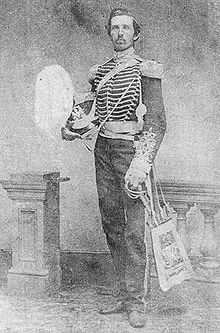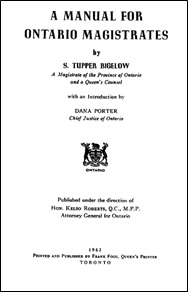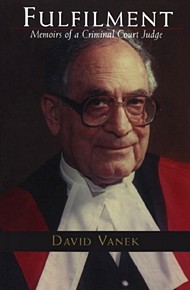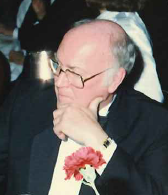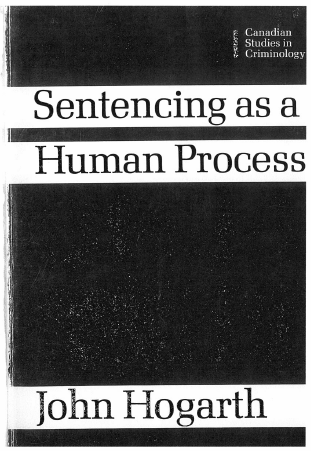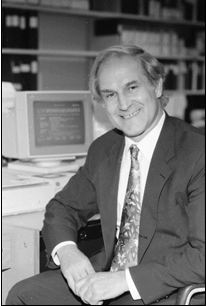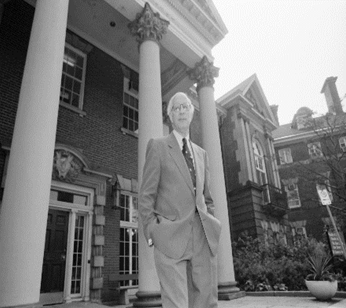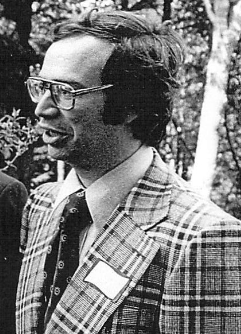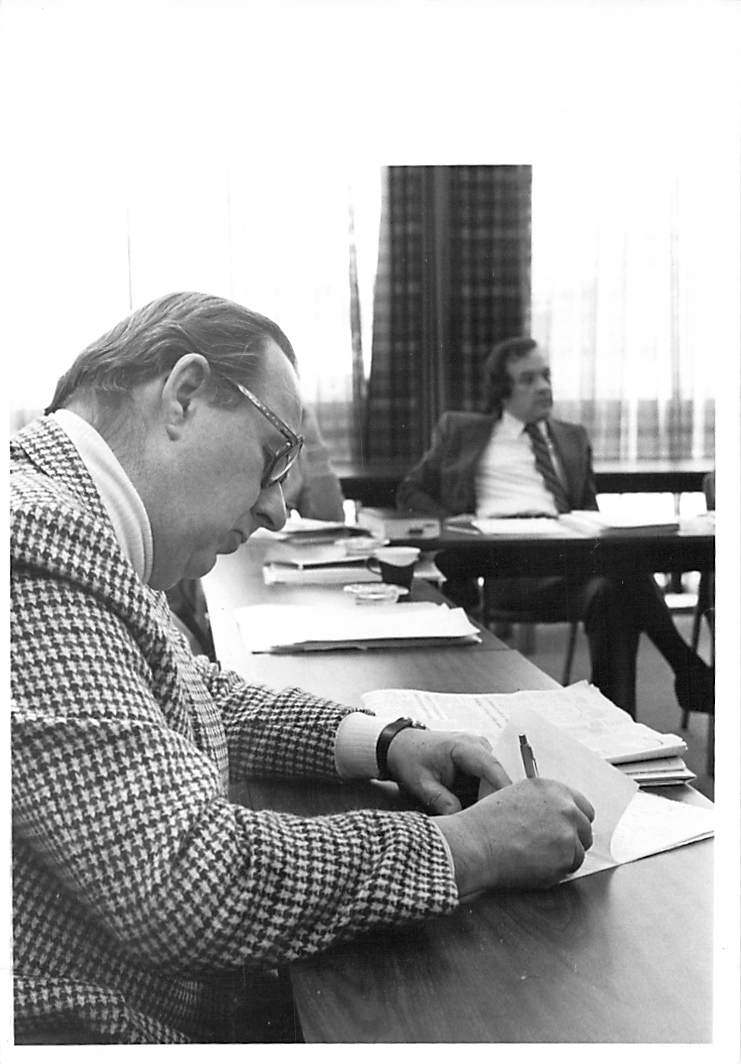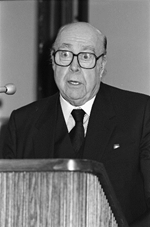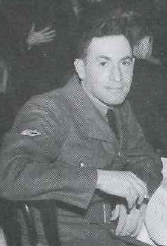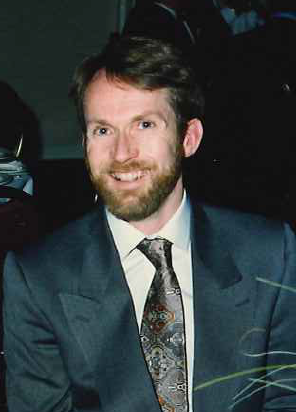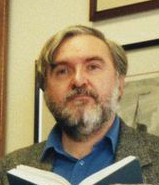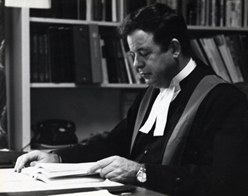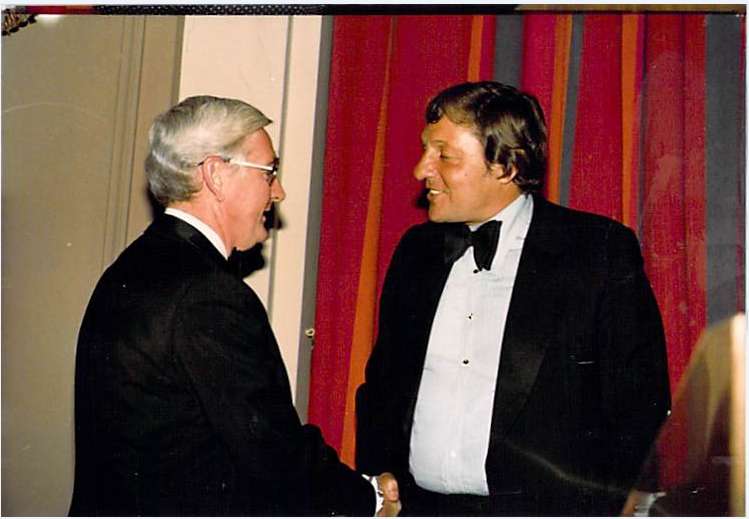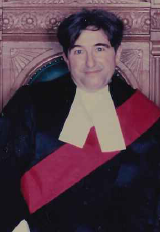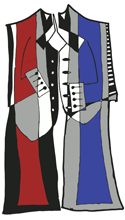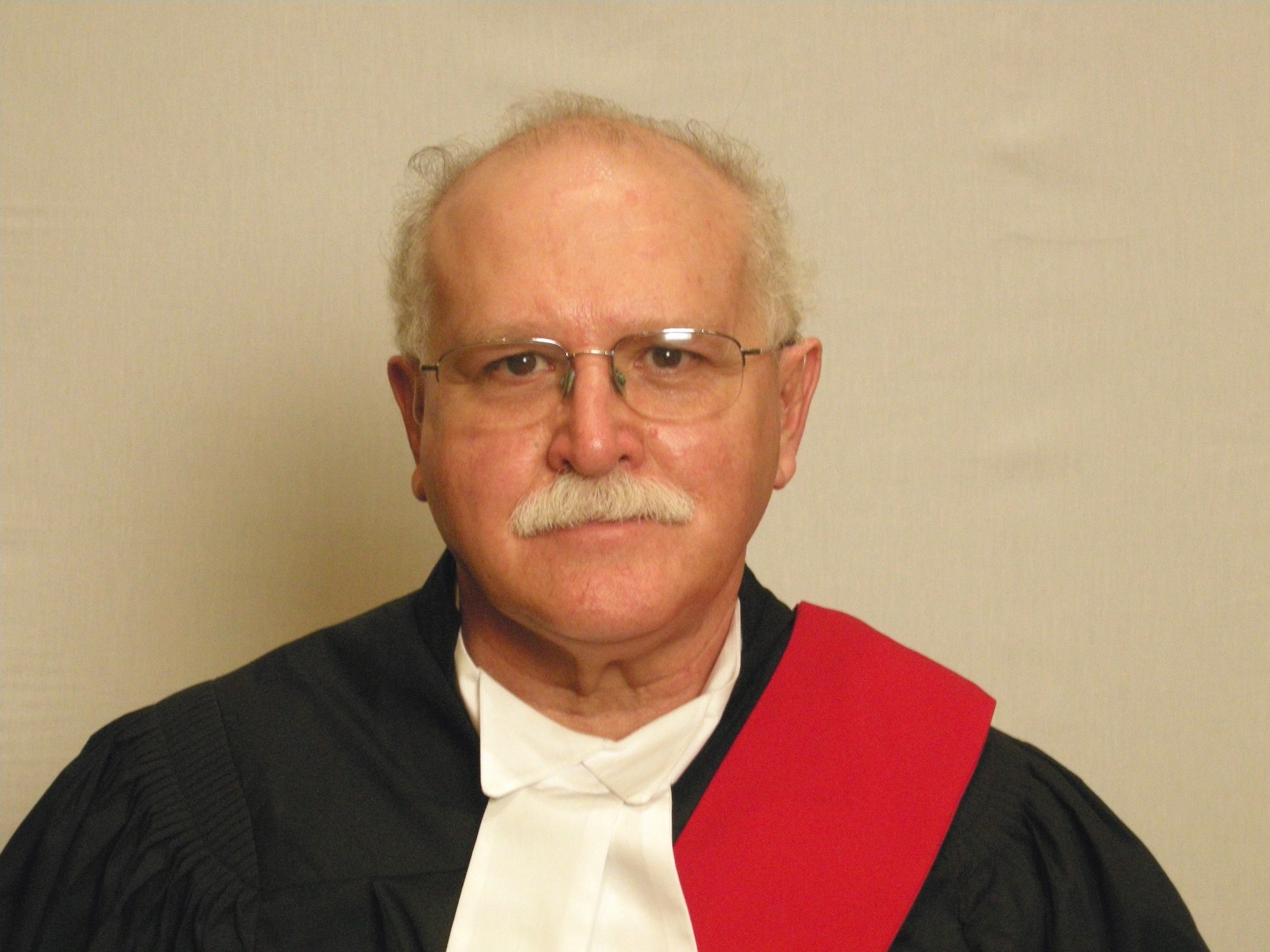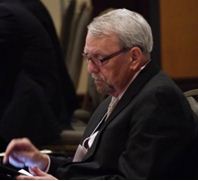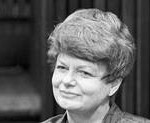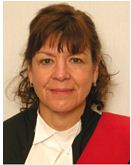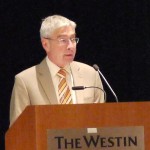Introduction
From the Court’s Beginnings Until 1968
The Transformation in Judicial Education Begins: Progress During the 1960s, 1970s, and 1980s
The Transformation Takes Root: From 1990 Onward
Conclusion
Appendix A
Appendix B
Introduction
As the Ontario Court of Justice evolved, passing through its many incarnations, formal education[1] went from something dismissed as unnecessary and inappropriate to become an essential element of the continuing professional development of judges and justices of the peace. Informal education – studying and reading on one’s own or learning informally from one another – had always been an aspect of judging and actively encouraged. But structured, organized continuing education did not begin in earnest until the 1960s.
How did this happen and why?
From the Court’s Beginnings Until 1968
The Magistrate’s Approach to Education: “Why, this job is actually very simple!”[2]
Common sense and intuitive feelings developed through past experiences ruled the day for many magistrates and justices of the peace – and defined their approach to decision making. The culture of the Magistrates’ Court, the backgrounds of those who sat as judicial officers, and the approach to judging reinforced the opinion that formal judicial education was not only unnecessary, but actually an affront.
“I depend upon an intuitive feeling as to a man’s guilt or innocence and not to weighing and balancing the evidence…” wrote police magistrate, Colonel George Taylor Denison in 1920.[3] He was close to retirement at this point, after serving in Toronto’s Magistrates’ Court since 1877. His disrespect for the rule of law was palpable. “My main desire has been above all things to administer substantial justice in all cases coming before me. This I felt should be done in preference to following legal technicalities and rules…I never follow precedents unless they agree with my views.”[4] The “law unto Denison” prevailed in his court – an individualistic approach that many magistrates and justices of the peace adopted. To their minds, education was simply not necessary.
Although Denison was a lawyer and cavalry officer prior to becoming a magistrate, the vast majority of judicial officers of that day had no previous legal training and did not see this as an impediment to fulfilling the role of magistrate. David Vanek, who later became a magistrate and then a judge of the Provincial Court (Criminal Division), recalled – with shock – an appearance in Magistrates’ Court he made when practising law in the 1960s. Vanek’s experience during that appearance vividly evokes the impact of a lack of training either before or after appointment to the bench.
“I recall making a strategic error in Magistrates’ Court when, in addressing the Bench, I argued that the case should be dismissed because the prosecution had failed to disclose any evidence of mens rea, probably the most basic concept of criminal law. It refers to a guilty mind or some quality of intention that is an essential ingredient of every criminal offence. It was obvious that the magistrate did not know what I was talking about.”[5]
A Manual for Magistrates: Published in 1962
By the 1960s, as more and more lawyers were being appointed to the Magistrates’ Court, the resistance to formal education assumed a slightly different tone. In general, the opposition took two forms:
• a perception that it was unnecessary because of the expertise lawyers brought to the bench; and
• a concern that education would interfere with the impartiality and independence integral to the work of a magistrate.
This opposition is evident in a manual written in 1962 by S. Tupper Bigelow, a lawyer and magistrate, to serve as a guide for all magistrates, but particularly tailored for new appointments to the bench.[6] Great care is taken in the introduction to Bigelow’s book – even though it is intended only as a guide – to reassure readers that judicial independence is of primary concern: “Each magistrate, of course, must in each case make up his own mind not only as to sentence, but also as to questions of law.”
Bigelow acknowledged that some judges, at the time, did receive formal training, but dismissed that approach as inappropriate for Ontario magistrates.
“In some European countries, there are schools for judges, and perhaps such a system has its merits. However, in all English-speaking countries, a judge or magistrate commences his duties on appointment without any instruction whatever. He probably thinks of the best judge or magistrate he has ever seen in court, and does his best to emulate him in performing his own duties.”[7]
In Bigelow’s world, education was to be undertaken only on an “as needed,” individual basis – and it was very much directed at the new appointee who wanted to learn court procedures, as opposed to the law. Knowledge of the law was assumed – and the experienced magistrates – “the seasoned fellows,” as Bigelow referred to them – were assumed to already have all the education they needed.[8]
“It would be well for the newly appointed judge to sit in court with a fellow magistrate until he thinks he has the ‘feel’ of the job….After court, he will naturally ask many questions, which the senior magistrate will only be too glad to answer. If possible, he should sit in this way with as many magistrates as he can. Thus, he will find many viewpoints on the same questions, and he will be able to reconcile them as best he can for his own purposes….There will come a time, and it will not be long, when the newly appointed magistrate will think, ‘Why, this job is actually very simple!’”[9]
This informal system continued – unabated until the late 1960s – as the only education a new judge would receive.[10] And that system often proved to be pretty thin gruel for many a new magistrate. Bill Sharpe, appointed in 1971, recalled his education this way:
“My training was watching Judge [Robert] Dnieper for a morning, after which he said I looked good to go and left to play golf. I also spent a few days with Judge David Vanek too. I think they felt that since I had been practising law for at least 15 years, I knew what I was doing.”[11]
Justice Sidney Lederman, an Ontario Superior Court judge, was – during his tenure as an evidence professor at Osgoode Hall Law School – an early advocate for judicial education programming for federally appointed judges. Here is how he characterized the early resistance of judges to education from anyone other than a fellow jurist. “They didn’t want to hear from an academic. They thought it was a Marxist idea to have someone from the outside become involved in judicial education. They thought it could be a vehicle to influence the court by special interests. The other theory was that ‘we know the law, what can they tell us?’”[12]
Changes Began with the Organization of an Association of Magistrates
In the early 1960s, magistrates formed an association and began holding annual conferences. While these conferences were primarily social events, they were also multi-purpose, since they provided the only opportunity for magistrates from across the province to get together and discuss matters of common interest. Discussion was “devoted to securing an increase of remuneration and pensions, which were at unreasonably low levels, and improving working conditions,” recalled Vanek.[13] As well, educational programming was tacked on to the conferences, which provided justification for funding by the provincial government. The Court had no power over its own funding – and relied on the good graces of the government of the day to pay for these gatherings.[14]
David Vanek recalled that the educational component tended to be thin in content.[15] And, given the funding structure, the magistrates could also expect a presentation from the “funder” – the Attorney General of the day – who would have no hesitation in “putting them in their places,” and demonstrating that judicial independence was a flimsy construct.
“Talkative Magistrates Are Laid Low by Attorney-General Fred M. Cass”
At the 1962 annual conference organized by the Ontario Magistrates Association, the group received a lecture from Fred Cass, the Attorney General, on his view as to how a magistrate should manage the courtroom. The Kingston Whig-Standard reported Cass delivered a “blistering attack” on the magistrates. When a magistrate interrupted Cass with a question betraying disagreement with his suggestions, the newspaper reported: “The attorney-general turned both barrels on the interrupter, saying ‘It is my impression that our courts are there to serve the public. If I find that this is not the view of anyone occupying any court over which I have jurisdiction, that person will be forthwith removed.’”
A Similar Situation Prevailed in Juvenile and Family Courts
The experience of judges in Juvenile and Family Courts was quite similar to that of the magistrates. “Judges did not receive any training for presiding over these specialized courts,”[16] wrote Ted Andrews, who served as Chief Judge of the Provincial Court (Family Division) from 1968 to 1990. A noticeable effect was evident in the quality of the work of these judges. As Andrews pointed out, “they conducted their Courts in their own peculiar way, and were given pretty much a free rein.”[17] This resulted in “a lack of uniformity in practice.”[18]
Recognizing this shortcoming, the judges took it upon themselves to form the Association of Juvenile and Family Court Judges. Andrews reported that the association “undertook a critical study of the various facets of the operation of the Juvenile and Family Courts…As a result, the Association made numerous recommendations for improvement to the Attorney General who was responsible for the administration of the Courts. With the co-operation and financial support of the senior people in the Attorney General’s Department, the Association began holding its own annual seminars in an attempt at self-education of its members.”[19]
Justices of the Peace – The Sorriest State of All
Fifty years ago, justices of the peace faced an even more daunting challenge of learning the job than magistrates and Juvenile and Family Court judges. A 1966 Globe Magazine article, “The JP’s awesome power,” detailed the broad scope of the jurisdiction of the justices of the peace, the fact there was no requirement for them to be legally trained, and then pointed out: “JPs get no formal introduction in their duties. By the provincial Justices of the Peace Act, each JP who is appointed must be examined and certified by a County Court judge before he takes up his duties. In practice, the questioning usually takes a perfunctory five or 10 minutes. After that, though the JP is presumed to call on the nearest magistrate or Crown Attorney if he needs guidance, he is on his own.”[20] A new justice of the peace was lucky to be given his or her own copy of the Criminal Code.[21]
The Transformation in Judicial Education Begins: Progress During the 1960s, 1970s, and 1980s
The advance toward instituting formal judicial education began in the 1960s for judges and picked up steam in the early 1970s, following the demise of the Juvenile and Family Courts and the Magistrates’ Courts and upon the creation of the Provincial Courts (Criminal and Family Divisions). This trend continued throughout the 1980s and by decade’s end, it was generally accepted that judges needed access to continuing, high-quality education throughout their careers. Serious challenges remained, however, in providing that education to all judges, and justices of the peace didn’t see the same degree of progress until well into the 1990s.
What Led To Education and Training for Judges Becoming a Priority?
In the case of Ontario’s Provincial Courts, three important developments contributed to judicial education becoming a priority:
1. A more visible Court and judiciary.
2. Strong judicial leadership.
3. Societal and judicial recognition, and acceptance, of the necessity of adult education.
A More Visible Court and Judiciary
In the 1960s and 1970s, the academic, legal and media worlds began to research and write about the Provincial Courts – both family and criminal – identifying the importance of the work and the difficulties the judiciary and the courts were experiencing. These voices were often critical, recommending judges and justices of the peace needed formal education to develop a “greater level of sophistication” in their approach to their work.[22]
Sentencing as a Human Process: Professor John Hogarth
Perhaps the most important and influential research was authored by Professor John Hogarth, then the Director of the Institute of Public Policy Analysis at Simon Fraser University. He was insistent that judges needed education – “an urgent need,” he concluded.[23]
His ground-breaking book, “Sentencing as a Human Process,” was published in 1971 through the new Centre of Criminology, University of Toronto, the result of intensive, structured interviews with 71 full-time Ontario magistrates (virtually everyone in the province), together with extensive analysis of their various cases, decisions and sentences imposed.[24]
Hogarth acknowledged, at the outset, that “Magistrates’ Courts have been under considerable and mounting criticism.”[25] He concluded that “50% of the variations in sentencing could be accounted for simply by knowing certain pieces of information about the judge himself” and that “…the judicial process is not as uniform and impartial as many people would hope it to be. Indeed, it would appear that justice is a very personal thing.” He also identified the direct and indirect ways that magistrates’ independence was being compromised, while providing strong evidence in support of all members of the Court being legally trained before appointment.[26]
Hogarth reported that the magistrates were generally gratified by their participation in this very important, original research. They felt isolated and overlooked, despite having heavy responsibilities within the justice system, deciding the vast majority of criminal cases in Ontario, and were delighted that someone – finally – was paying attention to the challenges they faced.[27]
In his concluding chapter, Hogarth made a forceful argument for judicial education. “The data presented here show that most magistrates sentence without a great deal of background information concerning the cause of crime or the results of research concerning the efficacy of different types of correctional methods. Few do any significant reading in this field and only a minority have visited penal institutions. No effective mechanism exists at present for bringing new information to the attention of the Courts, and, unless this is corrected, judges….are likely to continue to sentence ‘in the dark.’ There appears to be an urgent need to provide initial and ongoing training for judges.”[28]
Hogarth also provided specific advice as to the form and content future education initiatives should embody, along with not-so-subtle criticism of the quality of training offered to the judges at that time.) Education “should not be considered a frill that can be dispensed with in times of economic stress or pressures of work…training should not be directed solely to providing information…but primarily to enhancing the perceptual skills, human sensitivity, and critical abilities of judges and magistrates in handing information and assessing the results of research concerning the effectiveness of different types of penal measures.”[29]
According to Hogarth, the time was right for his book. “Although some judges were dismayed by what the book revealed, they felt proud – by opening themselves up, they were pioneers.” The book served as an important trigger for the introduction of a more formal and considered approach to judicial education. Hogarth explained: “That’s the way historical changes happen. Society was changing and the Court too was ready for change.”[30]
The academic world began to assume a key role in advocacy for judicial education during this period. Perhaps the most influential academics in bringing the issue to the fore were Professor John Edwards, who founded the Centre for Criminology at the University of Toronto in 1963, and Professor Tony Doob, whom Edwards brought to the Centre in 1971.
Both John Hogarth and Tony Doob noted that Chief Judge Fred Hayes (who was a Senior Judge when the research was conducted) was unhappy about the criticism levelled at his judges and the quality of the education provided to them. As a result, Hayes became less favourably disposed toward the research being done by the Centre of Criminology after the publication of Hogarth’s book. But there was support within the judiciary. Hogarth recalled he had judicial champions within the Provincial Courts who played important roles in building support for both the research and the book – and the education initiatives he proposed.[31]
Additional Recommendations for Judicial Education
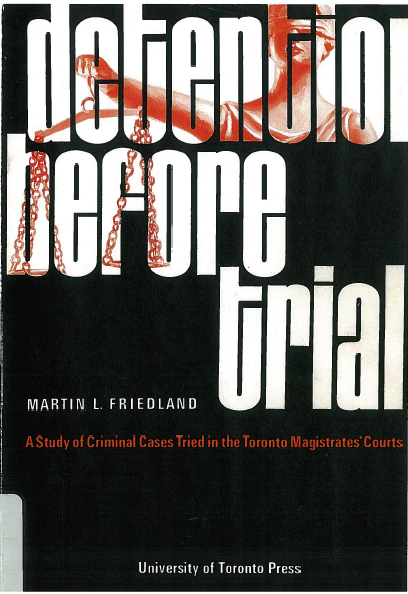 Another influential book in the history of judicial education was Professor Martin Friedland’s 1965 analysis of the bail process, “Detention before Trial.” He, like Hogarth, examined magistrates’ decision making process. Friedland, a law professor at Osgoode Hall Law School, conducted a thorough study of pre-trial detention, and in his concluding chapter, he wrote: “…the magistrate deciding the bail must have sufficient knowledge on which to base an intelligent decision. The system in Toronto depends mainly on speculation, the view of likelihood of the accused appearing for trial merely from his looks in court.”(Source: Friedland, Martin, Detention before Trial: A Study of Criminal Cases Tried in the Toronto Magistrates’ Courts, (Toronto: University of Toronto Press, 1965))
Another influential book in the history of judicial education was Professor Martin Friedland’s 1965 analysis of the bail process, “Detention before Trial.” He, like Hogarth, examined magistrates’ decision making process. Friedland, a law professor at Osgoode Hall Law School, conducted a thorough study of pre-trial detention, and in his concluding chapter, he wrote: “…the magistrate deciding the bail must have sufficient knowledge on which to base an intelligent decision. The system in Toronto depends mainly on speculation, the view of likelihood of the accused appearing for trial merely from his looks in court.”(Source: Friedland, Martin, Detention before Trial: A Study of Criminal Cases Tried in the Toronto Magistrates’ Courts, (Toronto: University of Toronto Press, 1965))
The Work of the Court Becomes More Visible Through the Media
Both The Globe and Mail and the Toronto Star published numerous articles that put the Provincial Courts – and the judges sitting in them – in the public spotlight and subject to increased critical analysis.
In 1972, for example, Justice Edson Haines of the Ontario Supreme Court spoke out vociferously in Chitty’s Law Journal about the need for education for all judges in Canada – and called for the creation of a national institute for the education of the judiciary. The Globe and Mail duly reported on Justice Haines comments.
“Mr. Justice Haines wrote that most of those appointed to the bench have received their formal education a long time before. ‘They were average students. Their instruction varied, and they learned in haste concepts which they have not been able to develop. Lawyers practice the kind of law their clients bring them, with the result that they become adept in a few fields, fairly proficient in some, and as for the remainder they avoid them or consult another lawyer. A man can have a distinguished career in law and almost never appear in court. Now as a judge he must engage in the whole field of law. Many of the subjects were not even taught when he went to law school. No lawyer knows all the law, but we expect it of our judges….A judge needs the opportunity, time and assistance in the reduction of his ignorance. In many instances it will not be a case of re-tooling, it will be tooling up for the first time.’”[32]
The Criminal Law Reports (that included editorial commentary by its editor, Professor Alan Mewett, Faculty of Law, University of Toronto) and the Criminal Reports began including more Provincial Court decisions. Reporting these cases made the decisions of the provincially appointed judges visible (and, thus, open to scrutiny) in a manner never before manifest. Later, the Reports of Family Law were introduced, under the leadership of Judge David Steinberg, making the Family Court more transparent.
Voices Calling for Improved Judicial Education in the Family Court Arena
The Juvenile and Family Courts were essentially invisible in the 1960s, their work often done behind closed courtroom doors and subject to little academic and media analysis. Criticisms of the juvenile system became more public in the United States and Canada after the 1967 U.S. Supreme Court’s decision, In re Gault[33], that held juveniles accused of crimes in delinquency proceedings were entitled to due process protections, similar to those available to adults. Research in both Canada and the U.S. focused on the denial of children’s rights and on the perceived failure to protect their best interests, particularly in the child welfare system. Information about the significant number of aboriginal children in care, the impact of the “60s scoop,” and incidents of poor foster care started to emerge – highlighting the importance of the work being done by the judges in the provincial courts.
The “60s Scoop”
The 60s Scoop refers to the removal of large numbers of Aboriginal children from their families and their subsequent adoption by non-Aboriginal families in Canada between 1960 and the mid-1980s. This was done with little if any involvement of the families’ communities or bands.
(Murray Sinclair, Donna Phillips and Nicholas Bala, “Aboriginal Child Welfare in Canada” in Nicholas Bala, Joseph Hornick and Robin Vogl, eds., Canadian Child Welfare Law (Toronto: Thompson Educational Publishing, Inc., 1991))
Lawyers began appearing more frequently – and better equipped – in provincial Family Court proceedings beginning in the 1960s. At that time, academics such as Professor John Barber, at Osgoode Hall Law School, and Professor George Thomson, at Western University Law School, introduced areas of law being applied in Juvenile and Family Courts to the curriculum, such as child protection and proceedings under the Training Schools Act. Young lawyers entering the profession became more adept in crafting sophisticated arguments in Family Courts across the province. Similarly, the establishment of Ontario’s legal aid plan in 1967 and the steady growth in community legal clinics in the 70s, including law school clinic programs with a special connection to the work of the Provincial Courts, were powerful forces inevitably leading to a more transparent court.[34]
Judicial Leadership
Ontario’s Provincial Courts were acknowledged early pioneers in judicial education. This was a direct result of having two Chief Judges who served throughout the 1970s with a special interest in education, together with two judicial associations that began to take leadership roles in education.
Ted Andrews served as Chief Judge, Provincial Court (Family Division) from 1968 to 1990. Fred Hayes, his counterpart on the Provincial Court (Criminal Division) was Chief Judge from 1972 to 1990. Interestingly, Andrews appears to have had more success at providing education to the judges of the family bench.[35] “Although the family bench was small, Andrews was demanding of Attorneys General and got more for his judges’ educational programming than Hayes,” stated Allen Edgar, Research Counsel to the Court. “That continued when the two benches were combined (in 1990). Then it was a question of bringing the criminal bench up to the standard of the family bench in judicial education.”[36]
Leadership of Criminal Division Educational Programming
Annual conferences organized by the magistrates’ association date back to the 1960s. However, as indicated previously, these were primarily social occasions, combined with reports about the business of the Court, interspersed with lectures – usually delivered by magistrates – on the law.
David Vanek, appointed to the Magistrates’ Court in 1968, wrote of his introduction to formal judicial education:
“Several years before I took office, the magistrates of Ontario had organized an association that held annual conferences and arranged educational seminars and meetings. After magistrates became judges (in 1968), the association continued to operate as the Provincial Judges Association of Ontario (Criminal Division)….I developed an interest in the educational programs of the association, although I found these to be lacking in substance.”[37]
Undaunted, Vanek stepped up to the plate and joined the Association’s educational committee, eventually serving for several years as chairman of the committee, aided by a group of equally devoted judges. Working with Chief Judge Fred Hayes, this committee kick-started a more comprehensive approach to judicial education, introducing new programming, including a week-long “University Judicial Education Program,” a collection of annual regional sentencing seminars conducted in four locales, and periodic visits to the Court of Appeal.
The judges were generally receptive to these new programs. As Vanek recalled, in the 1970s and 1980s, “successive governments have been responsible for the enactment of a huge amount of legislation that added enormously to the importance and burden of the work in the Provincial Court. Amendments to the Criminal Code on a variety of topics brought forth an entirely new spectrum of charges and defences. Provincial Court judges were being called upon to hear and determine issues of a very high order of complexity. Educational courses were necessary to keep the judges abreast of developments in the law and the educational conferences became more focused.”[38]
Justice Sidney Lederman was an early leader in the judicial education field when he was teaching at Osgoode Hall Law School. For Lederman, Hayes’ annual University Judicial Education Program at Western University in London, Ontario “may seem modest now but this was probably the first regularly scheduled education program for judges in Canada. Hayes was a real leader with this initiative.” [39] In the early days, this program was offered twice each June and one-sixth of the criminal bench was invited (so that every judge would attend once every three years). The judges felt obliged to participate and Hayes would call those who missed in their designated year to be sure they would be there for the next offering.
The basic format was a set of lectures, with time for questions and answers. The following is an extract from Hayes’ report on the June 1974 edition of this program, offering a good summary of the scope of the proceedings.
“This year groups will study various subjects such as witnesses, the Protection of Privacy Act, the admissibility of photographs, video-tape and voice prints, diminished responsibility, competence, parties to offences, identification, and other subjects.”[40]
The acknowledged judicial leader in criminal law, Court of Appeal Judge G. Arthur Martin, was a frequent lecturer. He would be joined by other judges from various courts along with academics who would present on all aspects of criminal law. In the 1980s, teaching methods started to expand beyond the simple lecture (“talking head”) formula to become more sophisticated and oriented specifically toward adult learners. For example, videos, as learning tools, were developed on subjects including qualifying an expert witness.
In the 1970s, the Provincial Judges Association of Ontario (Criminal Division) began offering, on a regional basis, four annual sentencing seminars that enabled judges to compare their sentences in simulated cases. Attendance was considered “obligatory”[41] by the judges. The seminars had the reputation for being simply exercises where each judge defended the perspective he or she brought to the fact situations that were presented.[42] John Hogarth and David Vanek were, however, equally critical of these seminars. According to Vanek, they simply “lapsed into a comparison of sentences for similar offences from locality to locality.”[43]
In his book, Hogarth pointed out the danger of this approach to education about sentencing practices.
“The content of courses and seminars for judges and magistrates must be carefully developed….Improperly handled, formal training can lead to the development of more sophisticated rationalizations for essentially punitive practices.”[44]
For this reason, Hogarth advocated using skills training, as opposed to what Vanek called lapsing into comparisons of sentences.[45] As Hogarth explained: “Training should not be directed solely to providing information about sentencing procedures or the content of institutional programmes available for offenders (as important as these matters are), but primarily to enhancing the perceptual skills, human sensitivity, and critical abilities of judges in handling information and in assessing the results of research concerning the effectiveness of different types of penal measures….This will undoubtedly make sentencing more complicated and difficult for them, but at the same time it is likely to create an atmosphere in which sentencing can be improved.”[46]
Vanek’s recollections reveal another great challenge the Court faced when developing educational programming – funding – or, specifically, the lack therof.
At the Association’s Annual Conference for criminal judges in 1974, when Vanek was chair of the Education Committee, he proudly reported on a proposed educational program “designed to give each Provincial Court judge an opportunity to observe hearings in the Court of Appeal for several days, and to participate in discussions” about the results of the appeals heard.[47] This program ran for several years but was cancelled due to lack of funding from the provincial government, Vanek later reported.[48]
This cancellation points to a major impediment to the development of much-needed educational programming. The government’s control of the budget left the Court without full control over the development and delivery of its education. Change on that front, however, was coming in the form of an historic memorandum of understanding in 1993.
As recently as the late 1980s, the primary “training” a new Criminal Court judge could expect still only involved shadowing a judge at Toronto’s Old City Hall for up to two weeks. A case in point: upon his appointment to the Provincial Court (Criminal Division) in 1986 to sit in Ottawa, Brian Lennox recalled travelling to Toronto for a stint of a couple of weeks at Old City Hall watching other judges do their work between the date of his appointment and his swearing-in. Lennox credits all of the Ottawa judges, led by then Senior Judge Paul Bélanger, with guiding him in his new role as a judge – and providing ample informal education to him.[49]
Lennox also recalled attending a week-long program in substantive law offered by the Canadian Association of Provincial Court Judges (CAPCJ). This innovative program had been introduced in the 1970s for new appointees from all provincial courts across Canada but, as Lennox recalled, back in the 1970s and 1980s, not all new appointees from Ontario were given the opportunity to attend.[50]
Newly appointed judges were also given some instructional materials, including “The Conduct of a Trial” (a document Hayes developed and augmented in response to new developments in the law); a copy of the Criminal Code and a subscription to a criminal law case reporting service.[51] Circulation of pertinent materials improved when Allen Edgar joined the Court as Research Counsel in 1980. Edgar recalls that “The Conduct of a Trial” comprised approximately 75 pages when he began working with the Court. In the early 1980s, Hayes gave Edgar responsibility for updating the manual. “Now it is fatter and electronic – some 300 pages in length,” stated Edgar. “The judges call me with legal questions and, as a result, I know what revisions need to be made to ‘The Conduct of a Trial’ – it’s a synergistic process.”[52]
“Ontario had the best judicial education”
“My first brush with judicial education was in Ontario in the very early 1970s,” recalled Judge Sandra Oxner. Oxner, who later became a leader in her own right in the realm of judicial education in Canada, was appointed to the Provincial Court of Nova Scotia in 1971.“
I had just been appointed to the bench but they had no judicial education at all in Nova Scotia at that time. I went to Fred Haye’s Court to see his education program. Fred and Judge Cy Perkins were involved in developing the programs at that time. In those days, judicial education was an afterthought, not at all esteemed and there was no money for it in most provincial courts in Canada. Ontario, on the other hand, had the best judicial education for any provincial court at that time and that was because of Fred Hayes.”
The Canadian Association of Provincial Court Judges was founded in 1973, with a key objective of promoting judicial education to all provincial court judges in Canada. Oxner became CAPCJ’s first education chair and patterned her initial efforts on those already established in Ontario. “In those early days, a lot of support for CAPCJ’s education programming came from Ontario.”
(Source: Interview of S. Oxner for OCJ History Project, 2014.)
Leadership of Family Division Educational Programming
Chief Judge Andrews, with the support of the Association of Juvenile and Family Court judges and individual judges, including Patrick Gravely, David Steinberg, and George Thomson, introduced the first education programs including some elements of what is now called experiential education. Andrews recruited Thomson to put together the first Judges’ Training Institute, which began in 1974 with three one-week programs offered to one-third of the family judges at each session. These programs involved many interactive elements, including analysis and discussion of the wide variations between amounts of spousal and child support awarded by judges, as well as a review of family assessment issues with Toronto Family Court Clinic psychiatrist, Dr. Clive Chamberlain.
The 1974 program also included opportunities to:
• visit a shelter for abused women;
• meet a person who had experience working with adolescents in Regent Park (then Toronto’s largest community housing project);
• eat dinner at a youth group home; and
• visit the Oakville Assessment Centre.
The 1975 program included viewing videos of mock family law proceedings followed by discussion of errors presented in the videos; identifying and resolving various evidence and ethics problems; debating truancy laws; and detailing alternatives to training school. Offered annually, thereafter, subsequent subjects of study included court administration issues such as caseload management, automatic enforcement of support orders and what a family court might look like in the future. The gradual move to planned, interactive judicial education with the Court had begun.
Justice Robert Walmsley played a significant role in judicial education after he became the Associate Chief Judge in the Provincial Court (Family Division) in 1978. He possessed an erudite outlook and advocated an eclectic approach to learning, which was always apparent in the programs he helped design.
In fact, Walmsley is credited as one of the pioneers in the area of “social context” education in Canada. “In 1985, at the invitation of Associate Chief Judge Robert Walmsley of the then Ontario Provincial Court, Family Division, the Ontario Women’s Directorate (OWD) delivered a full court programme on violence against women in relationships. Following the success of this programme, a second programme on women’s equality was also designed and delivered by the OWD to this court in March of 1987.”[53]
On the informal side of the education ledger, Andrews also brought in research counsel in 1974 to provide assistance to the family judges. Roman Komar[54] began collecting and circulating judgments and relevant statutes, as well as conducting research and producing valuable resource materials. His “Reasons for Judgment: A Handbook for Judges and Other Judicial Officers” was published in 1980. Chief Judge Andrews also expected newly appointed family judges to “learn by watching.” They were encouraged to sit and observe, for a couple of weeks, four or five judges whom Andrews recommended.
What is “Social Context” Education?
“What makes it possible for us to genuinely judge, to move beyond our private idiosyncrasies and preferences, is our capacity to achieve an ‘enlargement of mind.’ We do this by taking different perspectives into account. This is the path out of blindness of our subjective private conditions. The more views we are able to take into account, the less likely we are to be locked into one perspective….It is the capacity for ‘enlargement of mind’ that makes autonomous, impartial judgment possible.”
(Jennifer Nedelsky, “Embodied Diversity and the Challenges to Law” (1997), 42 McGill L.J., p. 107)In practical terms, this means that – as a step toward judicial impartiality – a judge should understand the factual and social context of a case. In fact, the law requires that context be taken into account by a judge. To this end, judicial education has developed in the area of “social context.”
Justice Donna Hackett of the Ontario Court of Justice has, in various roles, provided the judiciary in Canada with extensive guidance on the development of social context education.Here is her definition of that term:
“[S]ocial context education for judges entails the pursuit of at least four broad goals:
• increasing judges’ understanding of equality principles;
• facilitating enhanced recognition by the judiciary of the pervasiveness of disadvantage and inequality in modern society;
• challenging judges’ assumptions and the impact that such assumptions might have on the process of judicial decision-making; and
• demonstrating the relevance of the experience of diversity, (in)equality and (dis)advantage to the judicial function.”
(Donna Hackett and Richard F. Devlin, “Constitutionalized Law Reform: Equality Rights and Social Context Education for Judges” (2005) 4. J.L.&Equal.157, pp. 158-159. See also R. v. S. (R.D.), [1997] 3 S.C.R. 484)
A Summary of Programming for Judges Pre-1990 – And the Challenges of Moving Forward
“Until the merger (of the Courts) in 1990, the Family and Criminal Divisions each had separate jurisdictions, their own Chief Judges, and distinct education programs, which had been largely developed during the early years of their existence. Education programming was, in significant measure, the responsibility of the respective family law and criminal law judges’ associations in each of the two Courts.Programming within the Family Division consisted of:
i) a fall family law meeting;
ii) an intensive week-long program (created by Chief Judge Ted Andrews) known as “The Judicial Development Institute” in January; and
iii) a third seminar in the spring.
Within the Criminal Division, there were also three education programs:
i) a series of virtually identical regional criminal law seminars held in the fall in each of four regions;
ii) the annual spring meeting of the Court; and
iii) a one-week intensive criminal law program created by Chief Judge Fred Hayes and presented each summer in a university setting.
The challenge at the time of creation of the Ontario Court (Provincial Division) was to preserve the benefits of strong programming that had been provided both in criminal law and in family law within a reorganized and newly created Court. It was also important that the judges’ associations, both criminal and family, retain their preeminent role in the development and presentation of judicial education.”
(David Wake and Brian W. Lennox, “The Ontario Court of Justice: A Journey in Education,” National Judicial Institute: 20th Anniversary Essays, p. 41)
Justice of the Peace Educational Programming
There is no better description of the education (or lack thereof) that justices of the peace received than the following passage in Professor Alan Mewett’s 1981 report to the Attorney General concerning the then sorry state of Ontario’s justices of the peace.
If we were to look only at the formal provisions made for the training and continuing education of Justices of the Peace in Ontario, the position could only be described as appalling. In practice, one sees that it is less appalling than quite unsatisfactory.
On appointment, a justice will receive a binder containing material relevant to his office. This will include extracts from the relevant portions of the Code, the Provincial Offences Act, the Provincial Courts Act and so on, together with written material explaining some of the provisions. He may also be given a copy of the Criminal Code. He is expected either to be or to become familiar with these so as to have or acquire a working knowledge of what is expected of him. That is all the express formal training – if it can be so designated – that is provided for a new Justice of the Peace and the only “education” that he receives. But this only tells a very small part of a real story. While the Ministry has made sporadic efforts to provide training and educational seminars for Justices of the Peace, these have been few and far between. Not all Justices were invited to attend them, and some of those invited did not appear.
As a result, the burden of training and educating Justices of the Peace has fallen, of necessity upon the Provincial Court Judges and the Justices of the Peace themselves. In some localities, the Crown Attorney has also volunteered his services in this area. There is no consistency. Most Provincial Court Judges are acutely aware of the need to have their local Justices of the Peace properly trained and able to function intelligently. They will take the time to observe them, offer them advice and help. In the large urban centres, where conditions warrant it, a more formal program can be arranged. The Ontario Justice of the Peace Association has done its best, with limited resources, to arrange work-shops and discussion programs. The Toronto Justices of the Peace Association (separate from the Ontario body) also holds meetings and seminars. In some localities, a newly appointed Justice of the Peace will undergo an ‘apprenticeship’ period of sitting in or observing more experienced Justices of the Peace.
As a result, one can only conclude that the actual training and education of Justices of the Peace in this province range from virtually non-existent to the barely acceptable, depending upon the location. Clearly, steps must be taken to remedy this situation.[55]
Chief Judge Hayes became responsible for the justices of the peace upon his appointment as Chief in 1972. He recognized there were major problems with the lack of training provided to them, but the government made few funds available. This left Hayes scrambling to find the most basic materials for the justices of the peace.
Hayes made a huge, courageous and enduring contribution to education of justices of the peace in one critical area – Aboriginal appointments to the bench. Ontario’s Native Justice of the Peace Program owes its existence to Hayes – and the prodding of Alan Mewett.
Delivered to Attorney General Roy McMurtry, Mewett’s report on the office and function of justices of the peace included a separate set of recommendations concerning Native communities and remote areas. Mewett commented upon the relative absence of Native people from the ranks of justices of the peace.[56] One of Mewett’s suggestions to remedy this situation was a three-to-four-week “pre-appointment” education program tailored to Aboriginal candidates for the position of justice of the peace.[57]
Hayes acted on Mewett’s recommendations. The Native Justice of the Peace Program has been called “remarkable in its grass-roots foundation and its audacity.”[58] Retired Justice Gérald Michel and Doug Ewart (director of the Policy Development Division of the Ministry of the Attorney General when the program was introduced) share identical memories of Hayes’ actions. According to Ewart , “At a time of widespread discrimination, and well before significant numbers of aboriginal people entered law schools and joined the legal profession, this program provided the first sustained and supportive educational program to bring aboriginal people into presiding positions in Ontario’s courts.”[59]
“The aim was to have aboriginal people working in the courts where there was a concentration of aboriginal people, so they could feel part of the system…and to better serve the justice system in the isolated communities where people had no one to turn to for private complaints….The aim was also to train Justices of the Peace who would preside over minor offences under the reserve band by-laws and hear other provincial regulatory offences…”[60]
How did Hayes accomplish this feat? “The program worked with and within aboriginal communities,” explained Ewart. “People were identified who, while lacking formal qualifications, clearly had the intelligence, integrity and judgment that would make for a fine judicial officer. Instead of letting the lack of justice-system knowledge or other formal qualification bar them from such positions, Hayes instituted an education program that provided intensive, in-person, pre-appointment training so those gaps could be filled, and fully qualified individuals could be considered for appointment.”[61]
To make all this happen, Hayes made three crucial appointments to guide the program: Justice of the Peace Richard LeSarge (who became the Senior Justice of the Peace Responsible for the Ontario Native Justice of the Peace Program in 1994), Judge Gérald Michel, and Stan Jolly, an advisor with the Ministry of the Attorney General.
They were later joined by others, including Judge Gerald Lapkin[62], appointed the Co-ordinator of Justices of the Peace in 1990, and Shelley Howell,[63] who became research counsel serving the justices of the peace, in 1991. This group developed a manual of course material that was taught during programs of two-to-four-weeks duration across the province. Most days in these programs concluded with a test to assess the degree of comprehension of the material, recalled Michel.[64]
A Glimpse at the Success of the Native Justice of the Peace Program
The 1988/90 Annual Report of the Ministry of the Attorney General documented the tangible success of the program:“The Ontario Native justice of the peace program…encourages and enables native citizens to play an expanded role in judicial proceedings. To date, five full-time and almost 20 part-time Native JPs have been appointed under the program.”
This innovative program had two significant outcomes.
1. Eventually, Ontario was served by a good number of excellent Aboriginal justices of the peace.
2. A body of educational materials was developed, together with an approach to teaching not only pre-appointees but also newly appointed justices of the peace. By the mid-1990s, this material and approach became part of the introduction all newly appointed justices of the peace received before assuming full responsibilities for sitting – Aboriginal or otherwise.
Despite Hayes “audacious” move to introduce the Native Justice of the Peace Program, progress was generally slow on the broader education front. Even after the scathing comments delivered by Mewett in his 1981 report, the government was tardy in acting on his call for the situation to be “remedied.” Not until 1989 did the government, led by Attorney General Ian Scott, begin to respond – in the form of the Justices of the Peace Act, 1989, which created the Co-ordinator position that Lapkin filled in 1990. Ultimately, development of an education plan for the justices of the peace became mandated as a statutory requirement in 2002.
The Native Justice of the Peace Program – “Very Gratifying”
Gerald Lapkin recalled his involvement with the Native Justice of the Peace Program as follows.
“We took people with absolutely no involvement with or knowledge of the justice system. We invited people who were part of the community – respected by the community, not just “fly-in” people – they were members of the community. We trained them and it was very intensive. And it was very gratifying when they became justices of the peace.
The first time I went to swear someone in it was in Attawapiskat. I went up there as much for the community as for the new justice of the peace. Richard Le Sarge said this is a big deal. We rented the local town hall, and they put on a feast of traditional foods afterwards…. At another swearing in at a remote community, Richard Le Sarge, Stan Jolly, a local judge and I landed at an air strip, three miles from town. Nobody shows up. Finally, Richard flagged down a passing pick-up truck. We sat in the back of the open truck and put on our gowns as we were driving. When we pulled into town, everyone was waiting. The guy who was supposed to pick us up said: ‘I thought about picking you guys up, but I didn’t want to be late for the swearing in!’”
(Interview of Gerald Lapkin for OCJ History, 2014)
Societal and Judicial Recognition and Acceptance of Adult Education: Judicial Education Becomes a National Priority
Adult education is now an integral part of nearly every professional career. It’s easy to forget this is a relatively recent phenomenon. Although people have always learned “on the job” in an informal fashion, continuing formal education aimed at adults in the workplace was rare until the mid-1950s.[65] The history of judicial education in the Ontario Court of Justice mirrors what was happening in broader society.
What began as court-based programming, primarily at the provincial level, slowly became broad-based support for judicial education for all judges in Canada. Several organizations, all born in the 1970s and 1980s, focused on judicial education and had a significant influence on the development of education programming for the Provincial Court. That influence continued well into the 1990s and beyond. These organizations included:
• The Canadian Association of Provincial Court Judges;
• The National Association of Family Court Judges;
• The Canadian Institute for the Administration of Justice; and
• The Western Judicial Education Centre.
The Origins of Canadian Organizations Devoted to Judicial EducationThe work done at each of these organizations influenced the development of the approach taken by the Ontario Provincial Courts – both criminal and family – to judicial education.
- The Canadian Association of Provincial Court Judges (CAPCJ)
On May 4, 1973, under the leadership of Magistrate Lloyd Hicks from Newfoundland and with financial support from the federal government, CAPCJ was formed. This federation of provincial and territorial judges’ associations grew to include most of the thousand-plus provincial and territorial judges in Canada. One of its aims and objectives was: “To enlarge and perfect the knowledge and understanding of Provincial and Territorial Court Judges of the judicial function, by meaningful research and continuing education in various aspects of the law.”Sandra Oxner, then a judge of the Provincial Court of Nova Scotia, was CAPCJ’s first education chair (“The only reason I was given education to do was that nobody wanted it.”) and became its president. In addition to instituting regional seminars, she led the development of the first course for newly appointed judges in Kingston, Ontario in November 1976; a ten-day program, ultimately shortened to a week. It was the first such program in Canada and remains an essential introduction to the work of provincial and territorial court judges.At the time of the introduction of the new program, Ontario’s Criminal Court judges had joined CAPCJ but the Family Court judges had not. However, Ontario Family Court judge, George Thomson, developed the family law programming at this historic first course for new judges in Canada.CAPCJ holds a national annual conference that includes a substantial education program. Many Ontario Court of Justice judges have taken leadership roles in developing educational programming for CAPCJ.(Source: Interview of S. Oxner for OCJ History Project, 2014.)
- The National Association of Family Court Judges
Chief Judge of the Provincial Court (Family Division), Ted Andrews, was eager to create an association of Family Court judges across Canada to build support for these courts, promote judicial education for its judges and to advocate for a Unified Family Court. With a federal grant, he organized the first meeting of the association and it promoted family law education programming over the next decade. Ontario Family Court judges resisted joining CAPCJ until steps were taken in the 1980s to reassure them that CAPCJ would accommodate a focus on family law in its programming.
- The Canadian Institute for the Administration of Justice (CIAJ)
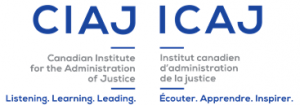 In 1974, the CIAJ was formed as a multi-disciplinary organization to link individuals and organizations active in the administration of justice. Judicial education was one of its mandates and when the federal judiciary was initially resistant, the organization turned to the provincial courts and joined with CAPCJ to develop its first regional and new judges’ programming. Later, CIAJ developed the first program for newly-appointed superior court judges and, perhaps most important, introduced the first skills-based education program for judges in Canada, with its now long-running program on judgment writing. The CIAJ has worked with the National Judicial Institute on many programs, including a seminar for longer-serving judges.
In 1974, the CIAJ was formed as a multi-disciplinary organization to link individuals and organizations active in the administration of justice. Judicial education was one of its mandates and when the federal judiciary was initially resistant, the organization turned to the provincial courts and joined with CAPCJ to develop its first regional and new judges’ programming. Later, CIAJ developed the first program for newly-appointed superior court judges and, perhaps most important, introduced the first skills-based education program for judges in Canada, with its now long-running program on judgment writing. The CIAJ has worked with the National Judicial Institute on many programs, including a seminar for longer-serving judges.
- The Western Judicial Education Centre (WJEC)
WJEC was a later entry into the field but an important initiative at the provincial court level, led by Judge Douglas Campbell of the Provincial Court of British Columbia. It was the first judicial education program to concentrate on social context education for judges, using innovative, experiential programming and involving those from the community who brought special experience and expertise to the programs offered. It worked closely with the Provincial Courts in the delivery of social context education in 1991.
Over the years, these organizations co-operated in various combinations to develop and deliver many different education programs in partnership. This focus on judicial education culminated in the formation of the National Judicial Institute  (NJI) in 1988, with the strong support of the then-Chief Justice of Canada, Brian Dickson. The NJI was founded with modest financial support from the federal government and many of the provinces, including Ontario. From its inception, two provincial court representatives have sat on the NJI Board of Directors, one from the Council of Chief Judges and one identified in consultation with Canadian Association of Provincial Court Judges. Chief Judge Hayes was one of the first board members. He was followed in that position by Judge Charles Scullion. Although there was a desire to serve all courts in Canada, little early programming was offered that provincial court judges could or did attend. Although the method of securing funds for new courses guaranteed that the NJI initially almost exclusively served federally appointed superior court judges, that emphasis was to change – and another transformation was set to begin for judicial education in Ontario.
(NJI) in 1988, with the strong support of the then-Chief Justice of Canada, Brian Dickson. The NJI was founded with modest financial support from the federal government and many of the provinces, including Ontario. From its inception, two provincial court representatives have sat on the NJI Board of Directors, one from the Council of Chief Judges and one identified in consultation with Canadian Association of Provincial Court Judges. Chief Judge Hayes was one of the first board members. He was followed in that position by Judge Charles Scullion. Although there was a desire to serve all courts in Canada, little early programming was offered that provincial court judges could or did attend. Although the method of securing funds for new courses guaranteed that the NJI initially almost exclusively served federally appointed superior court judges, that emphasis was to change – and another transformation was set to begin for judicial education in Ontario.
The Transformation Takes Root: From 1990 Onward
“The legislation…will require the Chief Judge to establish a plan for judicial education. These reforms will give the Ontario judiciary additional tools to continue their professional development and to maintain their high professional standards. This will help to ensure that Ontario’s justice system remains one of the finest in the world.”[66]
These are the words of Attorney General Marion Boyd when introducing the Courts of Justice Statute Law Amendment Act, 1993 on July 7, 1993. The justices of the peace would see a similar commitment to formal education in 2002, when the Justices of the Peace Act was similarly amended to provide a requirement for a plan for the continuing education of justices of the peace.[67]
These legislative changes were but one aspect of a transformation in judicial education. The amendments to the Courts of Justice Act did not stand alone. They were accompanied by a radical set of new tools guaranteeing formal education programming for all Provincial Court judges. Those tools included – among other provisions – new funding arrangements with the provincial government and new partnerships with various judicial education organizations, including CAPCJ, WJEC and NJI.
Education for Judges
Creation of the New Court
Work to improve the continuing education program was under way in the early 1990s when the family and criminal divisions of the Provincial Court became a single court: the Ontario Court (Provincial Division).[68] Sidney Linden was appointed the first Chief Judge of that newly constituted Court and very quickly learned that the Court had very little control over the realm of education.
“Just after my appointment, I heard about a French language training program that was taking place in Quebec. I read the material for the program and decided that it would be a great program for our judges, very practical stuff. I wanted to send several of our bilingual judges to attend the program and I assumed that this was just a matter of informing the Ministry and our judges would be off and on their way. How wrong I was! I received a call from the deputy minister and I can still hear him saying: ‘Oh, no, no, no. We can’t send your judges off to Quebec. It can’t be done. It’s far too extravagant and you have no budget for that. We might be able to afford to send one judge, but that’s it. And by the way, that decision is not yours to make, it’s ours.’ Of course he meant that it was the Ministry’s decision. I hung up the phone and asked myself: ‘Am I the Chief Judge of this Court or is the deputy minister?’ The answer was clear – at that point in time, the deputy minister was in charge.”[69]
Determined to rectify this situation, Linden approached the provincial government and suggested the creation of a memorandum of understanding between the Court and the Ministry of the Attorney General. This was the first of several such memoranda the Court signed with various parties and which served to enunciate the Court’s approach to education (along with many other Court-related issues.)
An Innovative Experience: Gender Equity Education, 1990-1991
From the time of his appointment to the bench in 1986, former Chief Justice Brian Lennox was involved with education programming. As he describes it, the approach to education – particularly for criminal judges – began to shift dramatically in the early 1990s, when the Court began working with the Western Judicial Education Centre (WJEC).
“The Provincial Court (Criminal Division) had been pretty complacent about its education programming, based on the assumption that we were the biggest and best criminal court in Canada and accordingly must have the best education programming. The complacency that arose from that assumption was shattered by the Court’s work with WJEC on Gender Equity in 1990 and 1991. The preparation for the program was meticulous, the materials (research, documentation, videos) were something we had never seen. The concept of training the trainers was entirely new for us and the extensive collaboration with academics, experts and the community was unprecedented. Without criticizing those who had gone before within the Court (and who often lacked the training, time, experience and resources), it became obvious that truly valuable judicial education required far more time and resources than we had ever been able to put into it.”
As former Chief Justice Sidney Linden recalled, this gender equity education arrived at a particularly important moment in the Court’s history. “It was the first time we put our toes into social context education and it was also the time when the Ontario Judicial Council had received complaints about the conduct of Judge Walter Hryciuk.” These complaints involved Hryciuk’s alleged sexual assault and harassment of female Crown Attorneys and court staff. (Hryciuk was ordered removed from the bench in 1993 after an Ontario Judicial Council Inquiry into the sexual misconduct allegations, but was later vindicated in 1996 by the Ontario Court of Appeal after it ruled the Inquiry judge unfairly allowed new misconduct complaints to be added to the Inquiry. Hyrciuk did not return to the bench following the Inquiry and retired in 1998.)
“When I saw what WJEC was doing with gender equity education, I came back and said ‘We have to do this in Ontario.’ At that time, our Court did not have control over our own education budget and I persuaded the Ministry of the Attorney General to give us the money to offer this critical program. I was so proud that we could deliver this high quality of education,” recalled Linden.
The experience of working with WJEC made the Court rethink the educational programming as a whole. It also helps explain the later decision to form a closer relationship with the NJI once that organization embraced this method of designing and developing skills-based, experiential education.
(Sources: Interviews of Brian W. Lennox for OCJ History Project, 2014-15; Interviews of S. Linden for OCJ History Project, 2014-15; David Wake and Brian W. Lennox, “The Ontario Court of Justice: A Journey in Education,” National Judicial Institute: 20th Anniversary Essays, p. 41)
Impact of the Memorandum of Understanding Between the Court and the Ministry of the Attorney General
The memorandum of understanding between the Court and the Ministry, first signed in 1993, transferred to the Chief Justice’s office both the budget and responsibility for the content of judicial education for judges and justices of the peace. More than that, it transferred funding for a number of other functions and provided the Chief Justice with enough flexibility in the Court’s budget to enable the Court to identify and prioritize areas of particular importance.
Requirement for a Continuing Education Plan for Judges – Courts of Justice Act
This provision was introduced into the Courts of Justice Act in 1994 – a formal recognition of the necessity of continuing education for provincial judges in Ontario.
51.10 (1) The Chief Justice of the Ontario Court of Justice shall establish a plan for the continuing education of provincial judges, and shall implement the plan when it has been reviewed and approved by the Judicial Council.
Duty of Chief Justice
(2) The Chief Justice shall ensure that the plan for continuing education is made available to the public, in English and French, when it has been approved by the Judicial Council.
Goals
(3) Continuing education of judges has the following goals:
1. Maintaining and developing professional competence.
2. Maintaining and developing social awareness.
3. Encouraging personal growth.
A New Governance Model and Another Memorandum of Understanding
A New Governance Model and Another Memorandum of Understanding: Chief Judge Linden’s first task was to develop a governance model that balanced the obligation placed on the Chief’s office with the established role of the two associations of judges – the Ontario Provincial Judges Association (Criminal Division) and the Ontario Family Law Judges Association – and ensured their support for the memorandum of understanding as a whole. (These two associations merged in May 1999 to become the Ontario Conference of Judges.) To accomplish this, a separate memorandum of understanding was developed with the two associations and, subsequently, the Ontario Conference of Judges. This document served to rationalize the education program for the Court and reaffirm the important role of the Conference in developing the regional and annual meetings and determining the content of the core education programming.
Creation of the Education Secretariat
The memorandum of understanding between the associations also formally recognized the creation of the Education Secretariat – “a body responsible for overall education policy and funding associated with judicial training” for the Court.[70]
Two former chairs of the Education Secretariat – former Chief Justice Brian Lennox and former Associate Chief Justice David Wake – provided a concise history of the development of the Secretariat over its life.
The “body included representatives from both judges’ associations (family law and criminal law)….Initial discussions at the Secretariat were related to the timing of judicial education programs and general curriculum issues, but quickly became more substantive….The mandate of the Secretariat was to coordinate education policy and programming for the whole Court, and it became increasingly active in programming.”[71]
The role of the Secretariat was further explained by Linden in 1999 as follows. “It administers an annual budget for education and allocates that budget among education programs which are either organized by the associations for the judges of the Court or otherwise offered to the judges. Core education programs are developed and presented by the judges’ associations.”[72] Further, it was the responsibility of the Education Secretariat to maintain the statutorily mandated education plan.
What is “Core” Education for the Judges?
The programs presented by the Education Secretariat and the Ontario Conference of Judges constitute the Core Program of the Ontario Court of Justice education curriculum. The Ontario Conference of Judges selects a chair of criminal law education and a chair of family law education. The two chairs in turn may create a support committee to advise and assist them in putting together the core education programs. Part of the core programming is offered annually and part of it is presented “as needed.”
1) Annual Core Programs
Seven family and criminal programs are presented each year with a changing curriculum to reflect the educational needs of the Court. These courses are open to every criminal and family judge in accordance with their area of practice.
2) “As Needed” Recurring Programs
These are programs presented annually or biannually with limited enrolment. They fulfill a variety of education needs such as the development of judicial skills and leadership and social context training. Examples of these “as needed” programs have included programming on the following topics:
• Social context,
• Judicial leadership and administration,
• Communication skills,
• Computer training, and
• Preparation for retirement.
For further details, see the Ontario Court of Justice, “Continuing Education Plan” published on the Ontario Court of Justice website and attached as an appendix to this essay.
According to Justice David Wake, who chaired the Secretariat from 1999 to 2005, it has faced a number of challenges over the years, including: continuing uncertainty about the different roles of the Conference and the Office of the Chief Justice; concern about possible erosion to the core programs; lack of coordination between the different programs; and the ongoing worry of the family law judges that their unique programming needs might be lost as their numbers declined with the expansion of the Unified Family Court.[73] The Secretariat has struggled with long-term planning. However, it has also overseen a remarkable expansion in continuing education that has benefitted not only the Court itself but also affected the quality of education available to provincial court judges across Canada – as a consequence of having shared many of its resources with other provincial courts over the years.
| The Court’s University Program, 1998-2006
Justice Elliott Allen served as the leader of the Court’s University Program, originally established by Fred Hayes, Chief Judge of the Provincial Court (Criminal Division) in the 1970s. These are his reminiscences of volunteering on this program from 1998 until its end in 2006. As a 1991 appointee to the Court, I never had the opportunity to attend the original University Program which had been established in the 1970s for criminal judges by former Chief Judge Fred Hayes. I got involved in judicial education around 1995 and, in 1998, was asked to run a week-long session at the Windermere facility on the north edge of the Western campus in London. This version of the University Program had been designed for the judges of our Court by Justice Don Fraser, and Professors Allan Manson, Don Stuart and Ron Delisle (all from Queen’s Law School), among others under the direction of then Associate Chief Justice Brian Lennox. Its focus was criminal law – and the thought was that all criminal law judges would attend at some point during their careers on the bench. Justice Greg Pockele was the “site convenor.” The Court’s research counsel, Allen Edgar, was a perennial presenter and resource. The new program reflected the “disciplined” approach to program design being promoted by the National Judicial Institute, and included social context education, which followed on the heels of the gender equity and “Court in the Inclusive Society” programs earlier in the decade. Before going any further, I must recognize the huge contribution to the program by Professor Allan Manson. He presented every year I was involved with the program. He recruited speakers, most notably the brilliant and dependable Professor Dale Ives from Western University. Manson always had a lecture in his back pocket to fill in if the scheduled speaker didn’t show. He was one of the main reasons the program became a bit of a salon for academics, with the discussions at mealtimes being as educational as the classes. The program ran from Monday morning to Friday lunch, with Wednesday afternoon off. There were generally between two and three dozen judges in attendance each year. We had a fabulous bright room for the sessions, with windows and glass doors the full length on both sides. To give you an idea of the types of presentations we heard: the opening session on June 8, 1998, was delivered by Professor Stuart on the law concerning the rape shield and honest belief. We went on to deal with domestic violence, and Charter issues, evidence and sentencing issues. That was followed by a presentation by Professor Connie Backhouse on the role of race, class and gender in the history of our criminal law. That year, Justices Sally Marin, Jim Blacklock, Saul Nosanchuk, Paul Megginson, Gilles Renaud and Greg Pockele assisted with presentations, a practice of peer-led education that continued throughout the life of the program. The University Program evolved over the years. Some things worked better than others, and the program had to be completely new every three years. The practice was that judges were offered the opportunity to attend every three years – so that meant a rework of the program on a three-year cycle. We attempted to respond to the needs of the bench by including current issues in social context education as well as black letter law. Presenters included notable academics, judges and practitioners from across Ontario and Canada. They included Professors Julian Roberts, Lorne Sossin, Lee Stuesser, Tony Doob, Justices Gary Trotter, Patrick Healy, the beloved Marc Rosenberg and many others. Professors Scot Wortley and David Tanovich presented on racial profiling. A pre-appointment Diane Oleskiw (now a member of our Court) achieved a huge “aha” moment for the group on the admissibility of third party records. Dale Ives, in the first of many presentations precipitated one of the hottest debates ever with an aside about how she didn’t have much use for the right to silence. Jim Blacklock was in his element listening to Professor Richard Devlin tell us why we should study jurisprudence. Professor Alan Leschied told us about the actual outcomes of our youth sentencing practices. I can’t begin to cover the vast array of sessions and presenters who made the University Program what it was. Most of the criminal law bench attended, some at every opportunity. The program functioned as a “working conversation,” with full participation of all those present in the sessions and in small problem-solving breakout groups. I was blessed with a free hand to modify the program on an ongoing basis. I became friends with some of the great criminal law thinkers of our time. It was an education volunteer’s dream. When I later took up teaching at the University of Guelph, all five authors of the textbook I used in my course on sentencing had previously presented at the University Program. While I worked with a free hand, I recognized that I was building on a long tradition. From the 1970s onwards, the University Program was continued and improved under a series of different judges of the Court, including Judges Cy Perkins, Russell Merredew and Douglas Walker. Judge Brian Lennox was given responsibility for the University Program by Chief Judge Hayes in 1988. I took over from then Associate Chief Judge Lennox in 1998 and worked with Associate Chief Justice David Wake after 1999. Following the 2006 session, the program was put on hold as the Court under then ACJ Annemarie Bonkalo began offering the opportunity to increasing numbers of judges to attend a new “Judges to Jail” program, designed to introduce judges to the corrections system. “Judges to Jail” was presented in the time slot customarily reserved for the University Program and was also university based, with the venue switching to Kingston and Queen’s University. Regrettably, for reasons having largely to do with the changing demographic of the bench and the increasing opportunities to attend the “Judges to Jail” series, the University Program ended. The University Program, which Hayes created and cultivated, served the criminal law judges well over its lifetime. In the process of evolution from the judicial education programming of the 1970s onwards, the University Program operated as an essential transition point and a proving ground for the dynamic, experiential judicial education of the modern Court. I will close with a memory of our very last session on June 16, 2006. Justice Tom Cromwell was still on the Nova Scotia Court of Appeal – he has since moved to the Supreme Court of Canada. I had no need to introduce him before he presented on the law of hearsay evidence and on the expression of findings of credibility, because he greeted everyone at the meeting room door, introducing himself to those he hadn’t met at the barbeque the night before in his customary humble and engaging manner. We hung on his every word – and learned. We had a good run. |
Groundwork is Laid for Strong, Consistent Support for Judicial Education
With the establishment of the Education Secretariat and the requirement for an education plan, the stage was set for a more coordinated approach to formal education – and that is what occurred. While it was modifying its own educational structure, the Court began to work – tentatively – with the NJI.
Involvement of the National Judicial Institute
In the early 2000s, the NJI began to expand its curriculum significantly. It continued an important new focus on social context education while moving to a model of education emphasizing experiential, skills-based learning. To make NJI seminars and materials accessible to provincial court judges, attendance at NJI programs was opened to provincial court judges who would pay only their expenses and a fee to cover the added costs for materials and food at the program. In addition, the NJI made its course materials and other resources freely available for use in court-based programming. Provincial judges were given access to the new, online courses and they became the most active students in these courses.
All of these developments encouraged the Court to formalize its relationship with the NJI – with another memorandum of understanding, signed in 2000 – and the NJI began providing substantive, pedagogic and logistical support. The key to the involvement of the National Judicial Institute was that the Court and its judges retained control over education and programming, while the NJI served in a significant advisory capacity.[74]
An NJI Senior Advisor (a lawyer who is also an education professional) was assigned the task of making the partnership work. The involvement of a Senior Advisor in the conception, design, development and presentation of programs has been critical to the evolution of judicial education within the Court. In consequence, the Ontario Court of Justice has had full access to the educational expertise of the NJI while, at the same time, the judges of the Court retain overall control and direction of their programming.[75] The education remains “judge-led” and those judicial education leaders are knowledgeable and given support to plan and design courses that reflect adult education principles.
The Court Builds an Expanded, Innovative Curriculum for Judges
Over the years, dozens of Ontario Court of Justice judges have taken leadership roles in developing education, and many others have served as instructors and facilitators. In addition to the judges who have served as criminal and family education directors, many have also served as education chairs at the four regional seminars presented annually and in the various family law programs. This approach of judge-led and judging-focused education recognizes two important dimensions of judicial education: the need to ensure that programs are relevant and responsive to judicial experience, and the need to preserve judicial independence.
At the regional level, with NJI support, the regional education chairs have developed innovative new modules on criminal law topics as varied as racial profiling, expert evidence, conditional sentences, human trafficking, and evidence in an electronic world. In the family law realm, topics have included interviewing children and assessing their credibility, cultural fluency in family court, evidentiary issues in family and child protection cases, adoption, and jurisdictional issues in custody cases.
This sampling of courses illustrates the organized approach taken to curriculum development. Subjects and themes focus on the content of judging (e.g., substantive law), the craft of judging (e.g., judicial skills), and the context of judging (e.g., judicial ethics, racial profiling).
Programming for Judicial Administrators
A new set of courses was introduced to the curriculum as a result of the signing of the Memorandum of Understanding with the Ministry of the Attorney General in 1993. “One of the consequences of signing the initial MOU,” recalled former ACJ Peter Griffiths, “was that, for the first time, we became responsible for the administration of our workplace. Over time, we came to understand that our responsibilities included a wide variety of administrative issues, such as human resources for the care and support of our judiciary, fiscal responsibility for a multi-million dollar budget, and responsibility for the development and dissemination of policy to bring uniformity in the manner that justice is administered. Added to these responsibilities, since the 1990s, judges have assumed new and larger roles in case management in keeping with the recognition of their judicial independence for scheduling matters in the Court. These new and important roles for judges also required new education programs to assist our existing and future judicial administrators.”
“We knew what we had to do when the MOU arrived on the scene in the early 1990s, but we didn’t know how to do it. As judges – and not professional administrators – we lacked the tools and expertise to perform the now necessary tasks. It was in light of these changes that the Court developed the first provincial education course for administrative judges. This program is now an integral element of the curriculum and is delivered bi-annually.
“The course has grown from a series of lectures to a skills-based program covering subjects like the importance of leadership, the use of court statistics for case management, time management tips, dealing with challenging people, and ways of working collaboratively. Given the relatively new position of the ‘administrative judge’ in courts in Canada, the Court’s program has drawn attention from other provincial courts and is now widely attended by senior administrative judges from other provinces. It now provides a forum not only for educating our administrative judges, but also sharing approaches to common problems with other judges from across the country,” explained Griffiths. Griffiths, in his role as Associate Chief Justice, served as Chair of the Education Secretariat from 2005 until 2013.
The Introduction of “As Needed” Programs
This creativity in programming has extended well beyond the annual core courses, with the Secretariat having approved several new “as needed” programs.
Since securing overall management of its budget, the Court has been able to increase the annual education allocation from approximately $750,000 each year to more than $1million. The Continuing Education Plan “provides each judge with an opportunity of having approximately 10 days of continuing education per calendar year dealing with a wide variety of topics.”[76] According to David Wake, in certain years, judges could select from more than 50 days of judicial education delivered by the Court itself. Judges could attend the programs that most directly met their specific learning needs. In addition, the education budget is also tapped to assist individual judges wishing to attend important education programs offered by other judicial education organizations, including the Canadian Association of Provincial Court Judges, the International Association of Women Judges, the Advocates’ Society, the Association for Family Court Mediation, the Cambridge Lectures (offered by the Canadian Institute of Advanced Legal Studies), Osgoode Professional Development, and the NJI – to name a few.[77]
Former ACJ Griffiths noted that, since the early 2000s, an important shift occurred in the philosophy of educating the Court’s judges. Previously, virtually the entire education budget had been spent on the core education programs and the University Program offered by the Court to its own judges. “Judges are now encouraged to seek out programs beyond the core programs that meet their individual needs. The budget for attending ‘outside’ education has increased more than fivefold in the past couple of decades,” he explained. Attendance at these outside courses has many benefits, including exposing the Court’s judges to new and innovative ideas – and bringing back many of those ideas to the Court’s own programming.
“As needed” new courses, many developed with the NJI, included: the first course in Canada designed to teach judges communication skills; a judgment writing course; the first child protection program; courses on managing domestic violence cases; special programs to teach leadership and management skills to judges assuming the administrative roles within the Court; and a “family law primer” for Criminal Court judges who periodically sit in Family Court. According to Brian Lennox, “many of these programs were seen as truly innovative within the judicial community and have gone on to form the basis of education programs presented by other courts, national and international, and other judicial education organizations.”[78]
An “as needed” course that has since become a staple for provincial courts across Canada is the Newly Appointed Provincial and Territorial Judges Skills Seminar, originally developed by the Court in partnership with the NJI and CAPCJ. Designed to complement the substantive law program presented to new appointees by CAPCJ, the Skills Seminar develops and enhances skills in a variety of areas, including delivering oral judgments, managing lawyers and lawyer conflict, dealing with self-represented litigants and recognizing ethical challenges that can arise in court.
One of the most creative courses, “Judges to Jail,” developed under the leadership of Justices Inger Hansen[79] and David Cole, enabled judges to learn about and be exposed to correctional institutions.
The Story of the “Judges to Jails” Program
As an example of how educational programs come into existence at the Court – and how judge-led education works in practical terms – Justice David Cole, one of the designers of this program, recounts how it came into being:
“Prior to my appointment to the Ontario Court of Justice (Provincial Division) in 1991, much of my 17-year practice as defence counsel involved litigating issues related both to sentencing and to what might loosely be termed ‘prisoners’ and parolees’ rights.’ From this work I had learned that Canadian judges at all levels of courts are largely unfamiliar with what happens once sentence is imposed; indeed, I usually found myself quite disappointed with some of the myths and urban legends that too often inform judicial decision-making. Either judges had never visited penal institutions, or their experience was so far in the past that it was simply irrelevant to comprehending the complexities of contemporary understandings of human rights in prisons and penitentiaries.
A few months after my appointment I approached Chief Judge Linden and Associate Chief Judge Lennox with a plan to take judges to visit federal and provincial institutions in the Kingston area. Both were immediately enthusiastic and supportive. After some discussions, it was decided that the first program, which took place in November 1991, would be administered by the National Judicial Institute. That way both federal and provincial judges would be able to attend, and the feasibility of the developing this into a more permanent program could be evaluated.
Though the program has gone through several iterations over the years, the basic template was set in the first program. Over approximately a week, small groups of 15 to 25 judges would visit a variety of prisons and penitentiaries, from maximum security Millhaven to the Napanee Detention Centre, to the Prison for Women, and to halfway houses. Inside the institutions they would meet with custodial and treatment staff, as well as prisoners. These visits would be supplemented by lectures and panels on several topics, including ‘What a Difference a Day Makes’ (what factors should a judge consider when contemplating a sentence in the two year range), what to think about in terms of realistic expectations about when and how much rehabilitative programming a prisoner would (and would not get) while incarcerated, discussing and observing the work of the National Parole Board, and listening to former prisoners, mostly lifers, tell judges about what it is like to live in the community after many years “inside”. Above all, organizers asked staff and prisoners to be candid, and we asked judges to keep an open mind. The aim of these programs is not to persuade judges to impose more lenient (or harsher) sentences, but rather to come away with a better understanding of what happens once the prisoner is shackled and removed from one’s courtroom.
Participants continually rate the program in very positive terms, many suggesting that it should be mandatory for judges, and that it should be taken early in the judicial career. Since 2007, the program has been offered every other year, and it is expected that this will continue to be the pattern for Ontario judges.
(Interview of David Cole for OCJ History Project , 2015)
Assessing the Educational Needs of the Bench
The Education Secretariat is responsible for monitoring the educational offerings available to ensure these meet the needs of the judges. Several initiatives have been undertaken, including:
- The “Kirby Report”: In 1997, David Kirby delivered a report entitled “Continuing Education Needs of the Ontario Court of Justice (Provincial Court).
- The “Paciocco Report”: Professor David Paciocco (now a judge of this Court) was retained by the Court to design a multi-year criminal law training program for judges. His report, “Ontario Court of Justice (Provincial Division): Long Range Education Plan (Criminal and Youth) was delivered in July 1998. According to Brian Lennox, “although the program was never fully implemented, elements of it proved extremely useful in subsequent programs and the plan itself demonstrated the potential benefits of integrated planning.”[80]
- The “Bala Report”: Professor Nicholas Bala prepared a paper in 1998 for the Ontario Association of Family Law Judges that spoke to the ongoing need for long-range planning for the education of family law judges.

Nicholas Bala
In addition to preparing the “Bala Report, “ Professor Bala who teaches at Queen’s Law School, often served as a faculty member at various OCJ conferences. The Court has regularly invited law professors from across Canada to participate in the delivery of its programs. (Photo courtesy of N. Bala)
- A comprehensive survey of all criminal law judges: This survey was undertaken in 2003 to identify areas requiring greater emphasis in the Court’s educational programming.Justice Katherine McLeod, who served as criminal law Education Chair at the time of this survey, recalled that “the educators learned from the judges themselves what the judges needed to learn and the information we gathered from that survey formed the backbone of the content of future conferences.”[81]
Where Do Those Teaching Skills Come From?

Rick Libman presenting at a justice of the peace conference. In addition to the design of programs being judge-led, the Court’s education programs are often delivered by judges, serving as faculty members. Libman has regularly lectured the justices of the peace on provincial offences matters, an area in which he has an expertise as co-author of Handling Provincial Offence Cases in Ontario – 2013. (Photo courtesy of C. Mews).
“I knew nothing about the structure of education in our Court and, frankly, nothing about educating judges when I became the criminal law Education Chair of the Court in 2001,” stated Justice Katherine McLeod. “And I learned very quickly that planning education programs for judges requires specialized knowledge about adult education principles, and a huge commitment of time and a large learning curve. I learned a lot in the five years I worked as an Education Chair – I went to NJI workshops designed for judicial educators, I listened to and learned from more experienced judges on the Court, and I watched how the staff at NJI designed and developed programming.”
“Judicial education in Canada is judge-led,” explained McLeod. “That places a big responsibility on the Education Chairs of the Court – and other judges involved in education programming – to learn the skills they need to design and develop programming.
Judges and justices of the peace in the Ontario Court of Justice undertake a number of education roles:
- presenters and facilitators,
- course planners, and
- education leaders as Education Chairs and members of various Court committees.
Judges of the Court can attend a “Judicial Education Leadership”seminar provided every two years for provincial and territorial judges offered by the NJI and the Canadian Association of Provincial Court Judges. For justices of the peace, the Court offers a similar program every two years – focusing on adult learning principles, experiential learning, program design and planning skills.
(Source: Interview of Katherine McLeod for OCJ History Project, 2015)
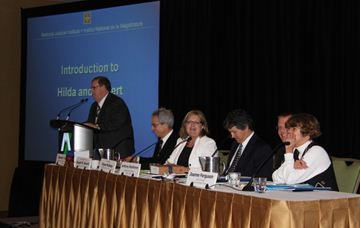
A Panel Discussion at a Justice of the Peace Fall Conference in 2009. Panel discussions are often used in the Court’s education programming. Depending on the topic presented, panel members can include a wide variety of participants. In addition to members of the Court, panelists can include judges from courts other than the Ontario Court of Justice, academics, lawyers, and experts from various professions. Care is taken in assembling these panels to balance the perspectives amongst the panellists. (Photo courtesy of C. Mews).
Other Judicial Education Resources
In addition to in-person educational programming, a variety of other resources are provided to judges and justices of the peace of the Ontario Court of Justice, many reflecting the Court’s commitment to informal learning.
- E-Learning: Judges now have access to remote learning computer-based online courses prepared and hosted by the NJI covering substantive law issues such as unlawful detention, mental health, and evidence, offered regularly each year.
- Educational Materials and Resources: The Centre for Judicial Research and Education (CJRE), created in 1991, is a law library and computer research facility located in the Office of the Chief Justice in Toronto. Staffed by six research lawyers and three assistants, it is accessible in person, by telephone, e-mail or fax. Staff at CJRE responds to specific requests from the judiciary for research assistance and provides bi-weekly updates with respect to legislation and relevant case law through its electronic publication, Items of Interest. Since 2000, Items of Interest has combined updates on criminal, family and justice of the peace matters – and has been distributed via email to all judicial officers of the Court.
As Brian Lennox recalled, “We tend to forget how much the format of judicial education has changed over the years. We forget the inadequacies of communications before the advent of the instant communication offered by, first, the fax machine and later e-mail. The ease of communication today obscures the difficulties of an earlier era. When Fred Hayes was Chief Judge, the only practical way of providing any kind of formal learning was to bring judges and justices of the peace together. Modern communications have largely freed judicial educators from the necessity of emphasizing substantive law – much of that can now be provided electronically – and have allowed us to deal more directly with skills and context education – a luxury the Court did not have until the 1990s.”
An example of the utilization of modern communications? Under the leadership of Education Secretariat chair, then-Associate Chief Justice Lise Maisonneuve, the Education Secretariat piloted “Judge Talks” – the Court’s version of TEDTalks, based on lectures provided at the Court’s in-person educational programming. Maisonneuve served as Associate Chief Justice from 2013 until 2015, then becoming Chief Justice of the Ontario Court of Justice.
Sharing the Wealth The Ontario Court of Justice Shares Programming Internationally
The reputation of the judges of the Ontario Court of Justice has extended into the international arena. Over the years, many have been invited to address international conferences and volunteer on the boards of international organizations.
The judges involved with problem-solving courts have been particularly active. Justices Ted Ormston and Richard Schneider, pioneers in the Mental Health Courts, have been frequent lecturers at international programs concerning mental health issues. Justice Kofi Barnes, previously a judge of this Court and who is now a Superior Court judge, was an active educator for the Organization of American States on the topic of his involvement with Drug Treatment Courts.
Justice Petra Newton has served on the board of directors of the International Association of Women Judges. Peter Griffiths worked with the Canadian Bar Association on judicial reform projects in Jamaica.The Court’s judges have become active educators at the international level as part of NJI education projects in other countries. Examples include: Justices Katherine McLeod and Brian Lennox in Mexico, Justice Joe Bovard in Peru and Chile, and Justice Miriam Bloomenfeld in Chile and Ukraine. These efforts are often built on the reputation of this Court for employing “judicial best practices” and the education offered internationally is seen as critical to the development of an impartial, competent, efficient and effective judiciary.
Judicial Education to Achieve Other Objectives A Sanction for Judicial Misconduct
The Courts of Justice Act permits the Judicial Council to require attendance at judicial education programming as a response to judicial misconduct. If the Council finds that there has been misconduct by a judge, it can order a variety of dispositions, one of which is an order that the judge take specific measures, such as receiving education, as a condition of continuing to sit as a judge.
(Ontario Judicial Council, “Eighteenth Annual Report”, 2012-2013, pp. 13-14)
Mentoring for Judges and Justices of the Peace
The Continuing Education Plan states: “The fundamental education of judges continues to be self-directed and is effected in large part through continuing peer discussions and individual reading and research.” This culture traces its way back to the beginnings of this Court – but has been promoted within the Court by many people, particularly by former Chief Justice Annemarie Bonkalo.
“I saw my work in this area as a formalization of ‘going down the hall to talk to a colleague,’” explained Bonkalo. Since the inception of the Court, new judges and justices of the peace have “shadowed” more experienced colleagues. Bonkalo’s work served to formalize mentoring.
In her early days as a judge, Bonkalo had prepared a “benchbook” bringing together key items, including cases and legislation, she would need to use while presiding. She began receiving many requests for copies of her benchbook, which she was happy to share. “In the courthouses in which I sat, there was always a culture of cooperation and generosity with both materials and one’s time,” she explained.
In her discussions with judges requesting her benchbook, she came to realize that her colleagues had both professional and personal questions about being a judge – and that it would serve all to have a couple of peers they could speak with on a regular basis: one in their courthouse and one from a different courthouse. In the early 2000s, she prepared a handbook for judicial mentors and mentees, which was distributed to all judges.
A more formalized approach to mentoring was adopted by the justice of the peace bench. Unlike judges, all of whom come to the bench with a significant legal background, the majority of justices of the peace are not lawyers – and the justice system is often a completely new working environment for them. Thus, the mentoring program is considered by the Court to be an integral part of the education offered to new appointees to this lay bench.
In 2011, a Provincial Mentoring Coordinators’ Committee was created to offer support and guidance to all mentors and mentees, and the mentoring program itself. The goal is to match mentors and mentees and ensure that every new justice of the peace has observed, understood and is able to put into practice the principles, skills and procedures he or she learned during the in-person sessions new justices of the peace attend in their first year following appointment.
(Ontario Court of Justice, “Justice of the Peace Education Plan,” April 2013; Interviews of Annemarie Bonkalo for OCJ History Project, 2014-5; Ontario Court of Justice, “Guidance on Mentoring for Justices of the Peace.”)
The Court’s Administrative Support for Judicial Education
Given the demands of the job, it was understood that judges and justices of the peace could not devote sufficient time to adequately organize the administrative details of their conferences and educational programs. Thus, the Office of the Chief Justice created “a unique feature of the Ontario Court of Justice” as described by former Chief Justice Brian Lennox.
He refers to a group of judicial education and training assistants (JETAs) who organize the administrative and logistical details for the educational programs, seminars, workshops and conferences held throughout Ontario; and produce all the materials required for these sessions.
Lennox further emphasizes the imperative to viably sustain the educational efforts. “Most courts do not have the resources to do this or do not see its importance. To quote former Chief Justice Sidney Linden: ‘It is not the big things that go right that people remember, it is the little things that go wrong.’ The JETAs ensure that all is right with our educational programming.”
(Source: Interviews with Brian W. Lennox for OCJ History Project, 2014-15)
Education for Justices of the Peace
“Formal education for the justice of the peace bench is essential for the judicial system to perform and uphold public trust and confidence in the judicial system.”
These are the introductory words of the Justice of the Peace Education Plan, April 2013. This plan has been statutorily mandated since 2002.[82] Education for the justices of the peace has undergone a radical transformation since 1981, when Professor Mewett wrote so angrily about its “appalling” condition.
Since the inception of the Ontario Court of Justice (Provincial Division) in 1990, justice of the peace education has become more rigorous, organized and professionalized. This can be, in part, attributed to the appointment of administrative justices of the peace with responsibilities for the delivery of education programs. The process was further hastened by fundamental changes made to the bench in the mid-1990s that saw the retirement of many justices of the peace and the consequent influx of many new appointments.
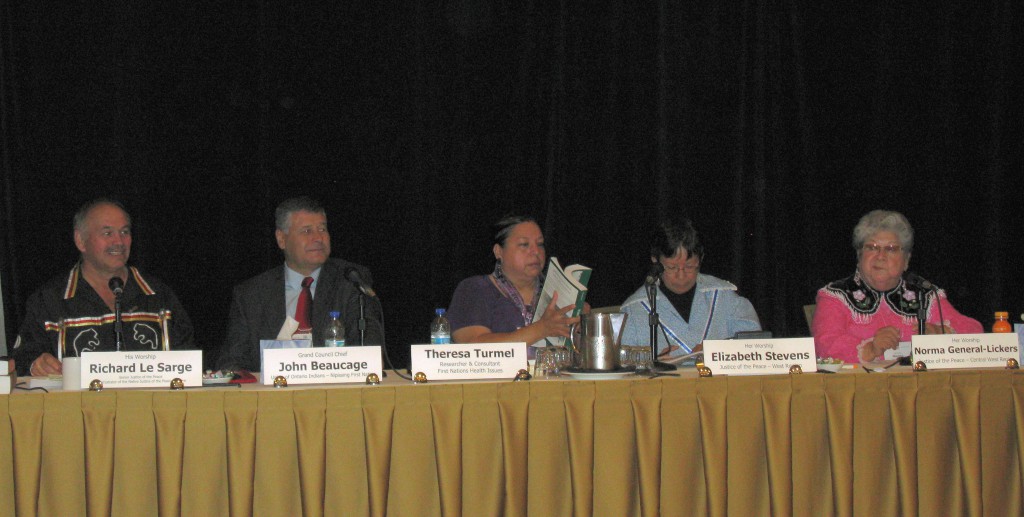 Educational Sessions and Workshops Offered to Justices of the Peace
Educational Sessions and Workshops Offered to Justices of the Peace
A panel discussion offered at a justice of the peace conference in 2008. During this session, panellists shared their perspectives on the impact residential schools had on Aboriginal communities.
While this session was offered to all the justices of the peace in Ontario, the Court also annually delivers a Native Workshop to which all Native justices of the peace are invited. The Native workshops focus on a mix of substantive legal issues and other non-legal issues relevant to Native justices of the peace. Three days in length, it is usually held in northern Ontario.
Faculty for these workshops have included judges, justices of the peace, counsel from the Crown Law Office – Criminal and the Crown Law Office – Civil as well as other lawyers in the Ministry of the Attorney General, lawyers in private practice, and representatives of various Aboriginal organizations.
Specific topics covered at recent Native workshops include search and seizure; bail; private prosecutions; avoiding conflicts in small communities; and Aboriginal rights of Métis.
(Source: National Judicial Institute, Judicial Education Guides, 2009, p. 25. Photo courtesy: C. Mews)
The Bench Modernizes – Administrative and Programming Changes
Upon enactment of the Justices of the Peace Act, 1989, a Co-ordinator of Justices of the Peace was appointed; the Office of the Co-ordinator within the Office of the Chief Justice was also established. Senior Judge Gerald S. Lapkin was the first co-ordinator formally appointed in August 1990. One of his key responsibilities was the delivery of education for the justices of the peace and he tackled that portfolio with a variety of initiatives.
- Introduction of a formal program of education for all new appointees – delivered in the first year following their appointment.
- An increase in the amount of educational programming offered to all justices of the peace.
- Bringing justices of the peace into the Office of the Chief Justice to work with him to support educational programming.
- Improvements to the mentoring program for new appointees.
- Hiring professionals to help prepare materials and deliver education programming
Shelley Howell was hired as research counsel in 1991 to help deliver more educational

Opal Rosamond in the 1980s. Rosamond was appointed a justice of the peace in 1978. In 1990, she became a Regional Senior Justice of the Peace in Central East Region and, in 1998, she was appointed Senior Advisory Justice of the Peace. She served in that capacity until 2004. As SAJP, one of her responsibilities included design and delivery of educational programming to justices of the peace. (Photo courtesy of G. Lapkin).
programming – both in-person courses and resources. She recalled using materials developed for the existing Native Justice of the Peace program and “morphing” them into a set of week-long programs for the newly appointees.[83] “We started slowly in the north by offering a bail program because it had been decided that the Court wanted all justices of the peace to conduct bail hearings. That would have been in the early 1990s.”[84]
Howell began firming up the mentoring program in 1992, by creating a set of checklists of tasks which mentors and mentees were expected to complete together before the mentee began performing those tasks. “We recognized that there was only so much the new appointments could learn in workshops, they also had to learn by doing with their mentors.”[85]
This set of week-long programs gradually grew into 9.5 weeks of education which new appointees receive in their first 18 months. In combination with the mentoring program, these workshops are seen as essential for all new appointments. “This education is premised on the fact that the justice of the peace bench is a lay bench, and that justices of the peace on appointment usually do not have legal education,” according to Chief Justice Bonkalo.”[86]
Continuing education for experienced justices of the peace was being expanded as well. Prior to Gerald Lapkin’s appointment as co-ordinator, this had consisted of one educational conference per year. By 1995, he had increased that to two conferences per year. “Lapkin made a major contribution to the bench,” recalled Howell. “He was fully supportive of education.”
In addition to Shelley Howell, Lapkin also relied on several justices of the peace who worked with him in the Office of the Chief Justice, beginning with Justice of the Peace René Proulx in 1990. In 1996, that position was formally established in the Office of the Chief Justice as the Senior Advisory Justice of the Peace, upon the appointment of Justice of the Peace Carolyn Robson.[87]
In 2008, the position of Senior Justice of the Peace was created to aid in the design, development and delivery of education.
The position of Co-ordinator of Justices of the Peace was transformed in 1995 and renamed “Associate Chief Justice/Co-ordinator of Justices of the Peace.[88] Justice Marietta Roberts was the first judge appointed to that position.[89]
“Conversion” of the Justice of the Peace Bench – Why Education Became Such an Important Priority in the 1990s
Before the implementation of the Justices of the Peace Act, 1989, many justices of the peace worked part-time and were paid on a fee-for-service basis meaning they were paid a separate and discrete amount for each service they performed, but otherwise received no remuneration as a justice of the peace.The new legislation contemplated justices of the peace working in full-time, salaried positions. Beginning in 1994, the Court undertook a process of “conversion” of justices of the peace to accomplish this purpose. “Conversion” was completed on August 1, 1995.
Along the way, however, many justices of the peace decided to retire rather than convert to full-time work. Others were forced to retire as a mandatory age of retirement – 70 at that time – had been imposed by the Justices of the Peace Act, 1989 and many of the existing justices of the peace were older than that. “Some people were 80 or 90 years old. There had been no age limit when it was a fee-for-service system,” recalled Lapkin.[90]
According to Howell, the process of conversion had a profound and transformative impact on education for the bench. “It not only meant many retirements, but that was followed by an influx of new justices of the peace. It was an impetus for much more training than we’d ever had before.”[91] At the same time, increased procedural and substantive decision-making was assigned to justices of the peace. “Bail hearings, search warrants, plus the province was downloading regulatory offences to justices of the peace – some involving potential jail time and fines up to $1 million. We had to train our justices of the peace for this work. We had to professionalize the bench and, up until the 1990s, there had been very little training. It just wasn’t sufficient.”[92]
Given the magnitude of the task of educating so many justices of the peace and the time pressures involved, Howell recalled the situation as “a bit of a nightmare.” Lapkin estimated 21 education programs were offered in 1990 alone on subjects ranging from the basics of the role of justice of the peace, to more specific functions such as bail hearings and issues related to ethics. In addition, these new programs were offered all over the province, with the result that Shelley Howell and others from the Office of the Chief Justice spent the mid-1990s “on the road” delivering education programs to new appointees.
Howell and other research counsel also built a comprehensive library of materials to introduce justices of the peace to all aspects of their work – reinforcing the obligation on all justices of the peace to “self-educate.” Further, Gerald Lapkin reached out to lawyers and academics to write textbooks designed for use by justices of the peace in preparing themselves to undertake their new responsibilities; the Annotated Provincial Offences Act, authored by Murray Segal and Justice Rick Libman being one such text.[93] As stated in the Justice of the Peace Education Plan, April 2013: “[O]ngoing education of justices of the peace continues to be self-directed and is encouraged and effected through continuing peer discussions and individual reading and research.”[94]
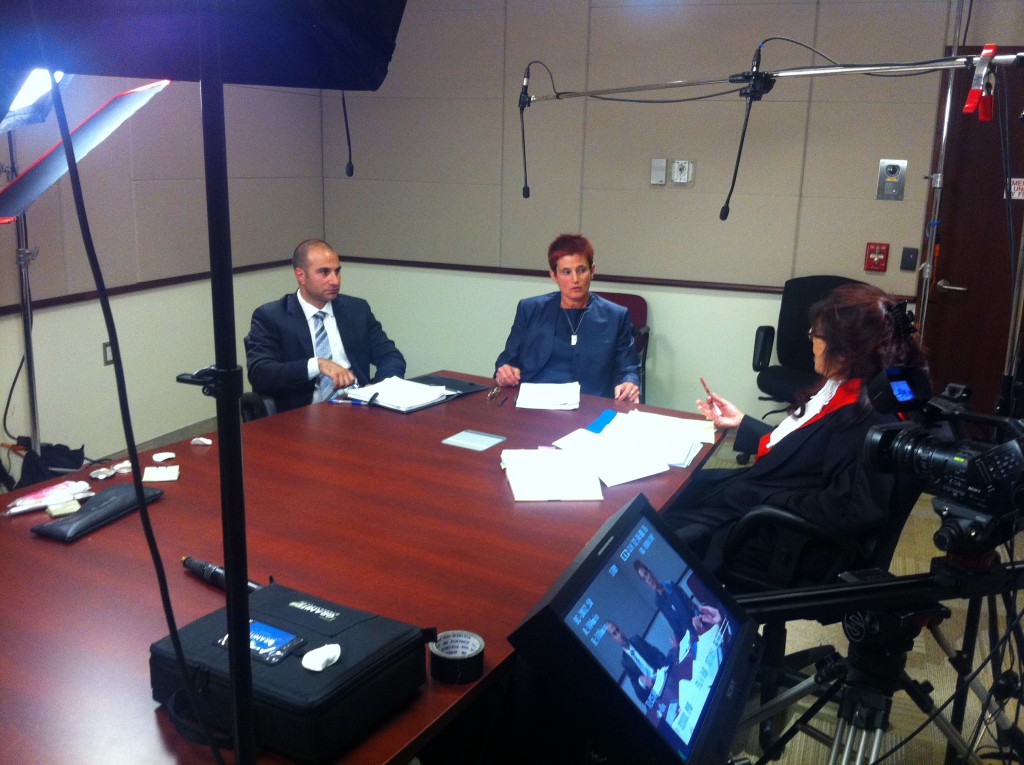
A Picture is Worth a Thousand Words
The filming of a video concerning the management of judicial pre-trials. From right to left: Justice Mavin Wong; defence counsel, Paula Rochman; and Joe Hanna, Crown Attorney. This video was used in 2015 educational programming for judges across Ontario.
At the heart of experiential learning is the idea of learner engagement by seeing and doing. Fact scenarios are often used to animate learning and link it concretely to the work judges and justices of the peace do. These scenarios are often presented using written fact patterns. However, a visual presentation of the scenario can often be more effective. A video recreates the physical environment in which judges work and it also allows the addition of “realistic moments” and non-verbal elements which occur when people talk and discuss issues. Realism is heightened by using lawyers and judges as “actors.” These fact scenarios – either written or visual – are used at conferences to promote discussion amongst participants and the refinement of the skills of judges and justices of the peace through practice and feedback.
(Courtesy: J. Chewka)
Changes Continue:The Move to Experiential, Skills-based Education
Over the years, a variety of new programs have been added to the curriculum – and a growing emphasis has been placed on utilizing experiential methods of adult education. This approach duly reflected changes to the Justices of the Peace Act in 2002 which statutorily recognized the need for continuing education for justices of the peace.[95] And, like the judges, justices of the peace have a plan in place – the Justice of the Peace Education Plan – a public document enunciating the goals of educational programming offered to the members of this bench and related policies.
Requirement for a Continuing Education Plan for Justices of the Peace – Justices of the Peace Act
This provision was introduced into the Justices of the Peace Act in 2002 – a formal recognition of the imperative of continuing education.
- (1) The Associate Chief Justice Co-ordinator of Justices of the Peace shall establish a plan for the continuing education of justices of the peace, and shall implement the plan when it has been reviewed and approved by the Review Council.
Consultation
(2) In establishing the plan for continuing education, the Associate Chief Justice Co-ordinator of Justices of the Peace shall consult with justices of the peace and with such other persons as he or she considers appropriate.
Plan to be made public
(3) The Associate Chief Justice Co-ordinator of Justices of the Peace shall ensure that the plan for continuing education is made available to the public, in English and French, when it has been approved by the Review Council.
In addition to the 9.5 weeks of education provided to new appointees, each justice of the peace is provided with six days of continuing education per year, including spring and fall conferences and a regional meeting. Several specialized programs are also offered including:
- a Native workshop to which all Native justices are invited,
- a French-language workshop offered to bilingual justices of the peace,
- pre-retirement workshops,
- seminars for administrative justices of the peace, focusing on leadership issues, and
- seminars designed to provide justices of the peace with teaching, mentoring and facilitation skills.
The curriculum is monitored and reviewed by the Advisory Committee on Education (ACE), comprised of justices of the peace nominated by both the Associate Chief Justice/Co-ordinator of the Justices of the Peace and the Association of Justices of the Peace of Ontario. Educational needs assessments of the bench have been conducted, including a survey of the all justices of the peace in 2012. Further, to benefit from professional pedagogical experience in designing and developing education, the Court has retained educational consultants from the NJI to support the work of the justices of the peace involved in the delivery of education.
The Goals of Justice of the Peace Education
The Justice of the Peace Education Plan – a statutorily mandated document – sets out the goals of the educational programming offered to all justices of the peace.
The goals of the initial education and mentoring program are:
- to develop the personal and professional competence and skills necessary to exercise judicial responsibilities in an independent and impartial manner, and improve the administration of justice;
- to develop an understanding of the legal issues and substantive law in areas in which a justice of the peace will be required to exercise jurisdiction;
- to preserve and enhance the judicial system’s fairness, integrity and impartiality by eliminating bias and prejudice; and
- to develop and maintain a sense of judicial independence and impartiality.
The goals of the ongoing continuing education programs are:
- to help members of the justice of the peace bench attain, maintain and advance professional competence;
- to develop and maintain social and cultural awareness in order to preserve and enhance the judicial system’s fairness, integrity and impartiality by eliminating bias and prejudice; and
- to encourage personal growth.
For further details, see the Ontario Court of Justice “Justice of the Peace Education Plan, April 2013” published on the Ontario Court of Justice website and attached as an appendix to this essay.
Judicial Education for Judicial Learners
“I quickly learned that lectures were not enough,” stated Justice Katherine McLeod. “Not only must judicial education be responsive to judges’ needs but it also must engage them by encouraging them to practise the skills they’re being taught. That’s the most effective way for an adult to learn.”
Judicial education at the Ontario Court of Justice has become increasingly based upon established adult education principles. It’s well understood that judicial education will be most engaging and effective when it implements these principles and employs an experiential, skills-based, judging-focused approach to the design and delivery of educational programming.
What are adult education principles?
Seven key principles distinguish adult learners from children and youth:
- Adults cannot be made to learn. They will only learn when they are internally motivated to do so.
- Adults will only learn what they feel they need to learn. They are practical.
- Adults learn by doing. Active participation is especially important to them.
- Adult learning is problem-based and these problems must be realistic. They like finding solutions to problems.
- Adult learning is affected by the experience each adult brings to it.
- Adults learn best in a relaxed and inviting environment. They like the opportunity to discuss issues and decide on possible solutions.
- Adults want information that will help them with their work or will improve their situation. They do not want to be told what to do; they want to choose options based on their individual needs.
(Source: Canadian Literacy and Learning Network, based on the pioneering work of Malcolm Knowles)
What is experiential, skills-based learning?
“What we have to learn to do, we learn by doing.” These are the words of Aristotle and they describe in basic terms the concept of experiential learning. It’s all about learning skills from experience – as opposed to pure academic learning where there’s no need for direct experience.
Experiential learning is particularly appropriate for adult learners because:
- adults have a store of work and life experiences,
- they draw conclusions based on their experiences, and
- they take actions based on previous experiences and the conclusions they’ve drawn.
Experiential learning:
- encourages adult learners to reflect on and discuss their experiences, explore what they meant and how they might apply them in the future,
- learn from the approaches, perspectives and interpretations of others, and
- practise the application of those approaches with feedback, in a learning environment.
(Source: National Judicial Institute)
What skills do judicial officers need?
- Intellectual or cognitive – e.g., judicial reasoning, decision making
- Verbal – e.g., communicating in court, mediating, managing trials and other procedures
- Written – e.g., judgment writing, providing reasons
What are the unique attributes of judicial learners?
Judicial education must be developed in a manner that understands and respects the roles of judicial officers, the independence of the judiciary, and the complexity of the issues judicial officers face.
- Judges are practically oriented and learning must be connected to their experiences and judicial needs.
- Various and balanced perspectives must be integrated into the learning activities, with focus on learners not on teachers.
- Authority as judges must be respected, and no “right” answers prescribed.
- A “safe space” must be provided for learning, in which judges remain in control of the learning environment and their confidentiality is respected.
- Judges must lead educational initiatives with appropriate supports.
(Source: National Judicial Institute, Interview of Katherine McLeod for the OCJ History Project, 2015.)
Conclusion
Judges and justices of the peace are expected to know the law and how to apply it skilfully and effectively.
Not so long ago, that presumption translated into the belief that they needed very little education or training after their appointments. Many judges believed that their experience as lawyers was adequate. Justices of the peace believed that they could acquire the necessary knowledge and skills along the way. Negligible concern was evinced about the possible impact of personal perspectives and intuitive feelings; possessing an understanding of the social context of the cases before them was not seen as part of sound decision-making.
As the Court’s history demonstrates, these beliefs have been relegated to the past.
Chief Justice of Canada Beverley McLachlin has eloquently addressed the reasons for continuing judicial education.
“We have learned how difficult it can be to decide cases under newly enacted laws without a proper understanding of their purpose and design. We have learned that judges can be called upon to play new roles, roles such as mediation and dispute resolution, and that those rest on the mastery of complex processes and skills. We have learned that judges can write more effectively, and be more responsive to the needs of litigants in the delivery of reasons for judgment. We have learned that the judge must be attuned to the psychological dimensions of being a witness, or a litigant, or a lawyer in the very special atmosphere of the courtroom.”[96]
The Ontario Court of Justice has built institutional structures to develop its own independent education programs and the administrative structures to deliver these. Over the years, the judges and justices of the peace have worked diligently to design, develop and deliver programs that help the judiciary to keep up-to-date with changes in the law, learn essential skills, and develop a better understanding of the importance of context. They have experimented with novel programming and introduced new methods of teaching that would have baffled – and likely enraged – magistrates George Denison and Tupper Bigelow.
Given the long history of courts – including the Ontario Court of Justice – judicial education is still in its infancy. How it continues to mature depends on many factors: new developments in technology, added responsibilities for members of the judiciary, the modernization of the judicial system, for example – all will play a role. But the case for judicial education as an essential aspect of the judicial role has been made and the consequent reforms will endure.
Appendix A
ONTARIO COURT OF JUSTICE
CONTINUING EDUCATION PLAN
2012 – 2013
The Continuing Education Plan for the Ontario Court of Justice has the following goals:
- Maintaining and developing professional competence;
- Maintaining and developing social awareness;
- Encouraging personal growth.
The Plan provides each judge with an opportunity of having approximately ten days of continuing education per calendar year dealing with a wide variety of topics, including substantive law, evidence, Charter of Rights, skills training and social context. While many of the programs attended by the judges of the Ontario Court of Justice are developed and presented by the judges of the Court themselves, frequent use is made of outside resources in the planning and presentation of programs. Lawyers, government and law enforcement officials, academics, and other professionals have been used extensively in most education programs. In addition, judges are encouraged to identify and attend external programs of interest and benefit to themselves and the Court.
EDUCATION SECRETARIAT
The coordination of the planning and presentation of education programs is assured by the Education Secretariat. The composition of the Secretariat is as follows: the Chief Justice as Chair (ex officio), four judges nominated by the Chief Justice and four judges nominated by the Ontario Conference of Judges. Research counsel of the Ontario Court of Justice serve as consultants. The Secretariat meets approximately five times per year to discuss matters pertaining to education and reports to the Chief Justice. The mandate and goals of the Education Secretariat are as follows:
The Education Secretariat is committed to the importance of education in enhancing professional excellence.
It is the mandate of the Education Secretariat to promote educational experiences that encourage judges to be reflective about their professional practices, to increase their substantive knowledge, and to engage in ongoing, lifelong and self-directed learning.
To meet the needs of an independent judiciary, the Education Secretariat will:
- Promote education as a way to encourage excellence; and
- Support and encourage programs which maintain and enhance social, ethical and cultural sensitivity.
The goals of the Education Secretariat are:
- To stimulate continuing professional and personal development;
- To ensure that education is relevant to the needs and interests of the provincial judiciary;
- To support and encourage programs that maintain high levels of competence and knowledge in matters of evidence, procedure and substantive law;
- To increase knowledge and awareness of community, the diversity of the population and social services structures and resources that may assist and complement educational programs and the work of the courts;
- To foster the active recruitment and involvement of the judiciary at all stages of program conceptualization, development, planning, delivery and evaluation;
- To promote an understanding of judicial development;
- To facilitate the desire for life-long learning and reflective practices;
- To establish and maintain structures and systems to implement the mandate and goals of the Secretariat; and
- To evaluate the educational process and programs.
The Education Secretariat provides administrative and logistical support for the education programs presented within the Ontario Court of Justice. In addition, all education program plans are presented to and approved by the Education Secretariat as the Secretariat is responsible for the funding allocation for education programs.
In 2011, the Education Secretariat approved a schedule of judicial qualities and abilities that should be supported and developed through education. This schedule will be helpful to assist in developing our education programs to meet our needs. A copy of that schedule is found in the table below.
Judicial Abilities and Qualities
| A. Knowledge and Technical SkillsSound knowledge of the law, procedure and their application.Rapid mastery of unfamiliar areas of law.Maintains bilingual skills. | B. Communication and AuthorityListens and communicates effectively.Establishes and maintains authority of the court.Manages hearing to enable fair and timely disposal. |
| C. Decision makingSound judgment.Appropriate exercise of discretion. | D. Professionalism and CivilityMaintains independence and authority of the court.Maintains personal independence and integrity.Promotes highest standards of behaviour in court |
| E. EffectivenessManages hearings to facilitate fair and timely disposal.Actively manages cases to promote effective and just conclusion of business.Applies technologies to effectively manage cases. | F. Leadership Skills for Puisne Members of the JudiciarySets tone for the court and courthouse.Shows interest in upholding a positive image of the organization.Demonstrates ethics, collegiality and support of colleagues. |
| G. Leadership & Management Skills for Administrative JudiciaryStrategically plans and organizes.Manages change.Supports and develops talent.Manages judicial resources.Encourages and facilitates teamwork. |
The current education plan for judges of the Ontario Court of Justice is divided into two parts:
- First Year Education
- Continuing Education
- FIRST YEAR EDUCATION
Each judge of the Ontario Court of Justice is provided with certain texts in print or electronic format and materials upon appointment including:
- Conduct of a Trial
- Conduct of a Family Law Trial
- Writing Reasons
- Commentaries on Judicial Conduct (Canadian Judicial Council)
- Ethical Principles for Judges (Canadian Judicial Council)
- A precedent for a Benchbook
The Ontario Court of Justice organizes a one-day orientation program for newly-appointed judges shortly after their appointment which deals with practical matters relating to the transition to the bench, including judicial conduct and ethics, courtroom demeanour, and administrative procedures. This program is presented twice a year.
Upon appointment, each new judge is assigned by the Chief Justice to one of the seven regions of the Province. The Regional Senior Judge for that region is then responsible for assigning and scheduling the new judge within the region. Depending on the new judge’s background and experience at the time of appointment, the Regional Senior Judge will assign the newly-appointed judge for a period of time (usually several weeks prior to swearing-in) to observe senior, more experienced judges and/or specific courtrooms. During this period, the new judge sits in the courtroom, attends in chambers with experienced judges and has an opportunity to become familiar with their new responsibilities.
In April of their first year, new judges are encouraged to attend a six-day New Judges’ Education Program presented by the Canadian Association of Provincial Court Judges (CAPCJ). This intensive one-week program is largely substantive in nature and is oriented to criminal law. In 2011, the program was presented at Château Bromont in the Province of Quebec.
The Ontario Court of Justice, the National Judicial Institute and the Canadian Association of Provincial Court Judges jointly present a five-day intensive program focusing on judicial skill training in November of each year at Niagara-on-the-Lake. The program includes sessions on the delivery of judgments (both written and oral), issues related to self-represented accused, controlling the courtroom, communication skills, judicial ethics, and the effective conduct of a judicial pre-trial. The program has been very successful and is refreshed annually. Ontario gives national leadership at this course by providing many of the organizers and faculty members along with financial support.
Judges in their first year of appointment are also encouraged to attend all education programs relating to their field(s) of specialization presented by the Ontario Court of Justice. These programs are outlined under the heading “Continuing Education”.
A Library Committee of the Court develops a list of texts and reporting services from which each judge is permitted annually to select materials of a value of up to $2,600 for their personal chamber’s library.
- CONTINUING EDUCATION
Continuing education programs available to judges of the Ontario Court of Justice are of two types, either internal or external:
- Programs developed and presented internally by the Ontario Conference of Judges with the involvement of the Education Secretariat;
and
- Programs presented by external organizations, such as the National Judicial Institute, the Canadian Association of Provincial Court Judges and the International Association of Women Judges.
(A) PROGRAMS ADMINISTERED BY THE EDUCATION SECRETARIAT
The programs presented by the Education Secretariat and the Ontario Conference of Judges constitute the Core Program of the Ontario Court of Justice education curriculum. The Ontario Conference of Judges selects a director of criminal law education and a director of family law education. The two directors in turn may create a support committee to advise and assist them in putting together the core education programs. Part of the core programming is annual in occurrence and part of it is presented “as needed”.
1) Annual Core Programs
Seven family and criminal programs are presented each year with a changing curriculum to reflect the educational needs of the Court. These courses are open to every criminal and family judge in accordance with their area of practice. They are more particularly described below:
There are two education programs dedicated to family law issues—the Judicial Development Institute in January and the Annual Family Law Program in the fall. Generally speaking, the principal topics are devoted to child welfare and family law (custody, access and support). Additional topics involving skills development, case management, legislative changes, social context and other areas are incorporated as the need arises. Each program is of two to three days’ duration and is open to any judge who spends a significant amount of his or her time presiding over family law matters.
A family law education component is also included in the Annual General Meeting of the Ontario Court of Justice held in May.
There are five major criminal law education conferences presented each year.
- At four regional locations, a three-day Regional Seminar is organized to be delivered in October and November of each year. These seminars cover a wide range of topics in the area of criminal law. Four separate agendas are developed each year to be responsive to the issues found in each region.
- A two and a half day education seminar is presented annually in May in conjunction with the Annual General Meeting of the Ontario Court of Justice.
All judges are entitled and encouraged to attend these seminars.
2) “As Needed” Recurring Programs
These are programs presented annually or biannually with limited enrolment. They fulfil a variety of education needs such as the development of judicial skills and leadership and social context training. Particulars of the programs offered are set out below:
- PRE-RETIREMENT SEMINARS: This program assists judges and their domestic partners in their retirement planning. The one and one-half day program deals with the social and financial issues that arise in the transition from the bench to retirement. This seminar was presented in March 2012.
- JUDICIAL COMMUNICATION PROGRAM: The Court, in partnership with the National Judicial Institute, developed a Communication Skills in the Courtroom seminar presented annually for one week in Stratford. Judges learn and practice techniques to improve both their verbal and non-verbal communication skills. The faculty includes judges and Stratford performers who coach judges to improve their ability to communicate effectively.
- c) FAMILY LAW PRIMER: A number of judges who preside primarily in the criminal courts throughout the province expressed an interest in presiding in family court. As well, in a number of jurisdictions judges preside in both family and criminal courts. A Family Law Primer program was developed with the assistance of the National Judicial Institute, and, in September 2006, 28 judges participated in an intensive week-long family law seminar. Judges who preside primarily in family courts across the Province provided a comprehensive overview in the following areas of family law:
- Child Protection and Adoption
- Introduction to Domestic Proceedings
- Custody and the Children’s Law Reform Act
- Enforcement: Family Responsibility and Support Arrears Enforcement Act
This in-depth Family Law Primer was held again in April 2008 and, for the first time, was jointly developed and delivered by and for the judges of both the Ontario Court of Justice and the Superior Court of Justice. In 2010, the Education Secretariat chose to explore new ways to prepare new family court judges. The development of this program will continue in 2013.
- d) SOCIAL CONTEXT PROGRAMS: The Ontario Court of Justice has presented significant programs dealing with social context. The first such program, entitled Gender Equity, was presented in the fall of 1992. That program used professional and community resources in its planning and presentation phases. A number of Ontario Court of Justice judges were trained as facilitators for the purposes of the program during the planning process, which lasted over twelve months. Extensive use was made of videos and printed materials which form a permanent reference. The facilitator model has since been used in a number of Ontario Court of Justice education programs.
The Court undertook its second major social context program, presented to all of its judges, in May 1996. The program, entitled The Court in an Inclusive Society, was intended to provide information about the changing nature of our society, to determine the impact of the changes and to equip the Court to respond better to those changes. A variety of pedagogical techniques, including large and small group sessions, were used in the course of the program. A group of judicial facilitators were specifically trained for this program which was presented following significant community consultation.
In September 2000, the Ontario Conference of Judges and the Canadian Association of Provincial Court Judges met in Ottawa for a combined conference which covered poverty issues and issues related to aboriginal justice.
At the Court’s Annual General Meeting in 2003, the theme of the education program was “Access to Justice”. A play followed by a panel discussion was used to describe issues of literacy, race, poverty, neglect, abuse and violence in the home affecting access to justice. Another session used lectures, videos, panel discussions and small group work to explore the issue of literacy and the courts.
As a result of our experience with these special programs, social context education is now integrated into most of the courses presented by the Education Secretariat.
Our approach to social context education has changed and matured since these courses were offered. We no longer deliver these programs as stand-alone courses that can serve to isolate the issues from the day-to-day experience of judges. Instead, social context education is now integrated into most of our core programming.
- e) JUDICIAL ADMINISTRATION CONFERENCE: This is an occasional conference last held over two days. It brought together about 75 administrative judges of the Ontario Court of Justice and was also open to those judges who have shown an interest in judicial administration. The program returned in January 2011 and was attended by five Chief Judges and seven Associate Chief Judges from other provinces as well as 70 judges of the Ontario Court. The curriculum included Leading Change, Developing Skills for Managing People, Technology in the Courtroom, Time Management and National Court Cultures.
- f) COMPUTER TRAINING: The Computer Effectiveness and Skills Training Seminar, developed in 2008, was delivered for the first time in February 2009. This course was designed by judges of the Ontario Court of Justice, the National Judicial Institute and the Judicial Information Technology Office. The course was divided into two programs – one designed for judges at the beginner level and another designed for those at the intermediate level where a new note-taking template was introduced. This note-taking template was developed to assist and encourage judges who wish to use their computers in the courtroom. In 2010, this course was extensively redesigned in response to course evaluations recommending it focus on judges with entry-level computer skills. The course was repeated in 2011. In 2012 the course focused on intermediate level skills with an emphasis on electronic legal research.
In 2009-2010, the computers of the Ontario Court of Justice were upgraded and a change was made from Outlook 2003 to Outlook 2007. The Judicial Information Technology Office, in partnership with the NJI, developed an extensive series of training modules pre-loaded onto each new computer to assist the judiciary in making the transition to Outlook 2007.
- g) AD HOC PROGRAMS: From time to time, a need is identified for a focussed program of education for which judges are individually selected to ensure regional and gender balance. In October 2009, such a program was offered on the subject of problem-solving courts. This program looked at the challenges, rewards and best practices for the development of problem-solving courts to address the special needs of aboriginals, mentally-disordered offenders and drug-addicted offenders.
In 2010, a special course was developed and delivered to educate judges and justices of the peace on the policy and procedures of the Courts’ newly implemented Discrimination and Harrassment Policy. These judicial officers will serve as mediators/advisors to help in resolving conflicts between members of the Ontario Court of Justice that arise out of discriminatory actions or words. A follow up two-day course was presented in the fall of 2010 to develop mediation skills.
In 2011, a course was given by invitation to judges sitting in larger communities on the topic of Urban Aboriginal Issues. The course was designed to develop understanding of the special issues confronted by native peoples in urban settings and to encourage the development of local processes that are culturally sensitive.
(B) EXTERNAL EDUCATION PROGRAMS
1) FRENCH-LANGUAGE COURSES: Judges of the Ontario Court of Justice who are proficient in French may attend courses presented by the Office of the Commissioner for Federal Judicial Affairs. The frequency and duration of the courses are determined by the judge’s level of proficiency. The purpose of the courses is to assure and to maintain the French language proficiency of those judges who are called upon to preside over French language matters in the Ontario Court of Justice. There are two levels of French-language courses: Terminology courses for francophone judges and Terminology courses for anglophone (bilingual) judges. This program is offered annually. In 2011, a new course was developed by the Province of New Brunswick that is skills based. It will become part of the education planning for judges working in the French language in the future.
2) OTHER EDUCATIONAL PROGRAMS: Judges of the Ontario Court of Justice are encouraged to pursue educational interests by attending education programs presented by other organizations and associations including but not limited to:
- Canadian Association of Provincial Court Judges
- National Judicial Institute
- Federation of Law Societies: Criminal (Substantive Law/Procedure/Evidence) & Family Law
- International Association of Juvenile and Family Court Magistrates
- Canadian Bar Association
- Criminal Lawyers’ Association
- The Advocates’ Society
- The Association for Family Court Conciliation
- Ontario Association for Family Mediation/Mediation Canada
- Canadian Institute for the Administration of Justice
- International Association of Women Judges (Canadian Chapter)
- Ontario Family Court Clinic Conference
- Canadian Institute for Advanced Legal Studies (Cambridge Lectures)
- French Language Education at Caraquet, New Brunswick and Quebec City
The Education Secretariat has established a Conference Attendance Committee to consider applications by individual judges for funding assistance to attend conferences/seminars/programs other than those presented by the Ontario Court of Justice. But judges are able to claim travel and accommodation expenses over and above this subsidy against a judicial allowance received by each judge in the amount of $2,500. Over the last several years, the budget has quadrupled to enable judges to define and meet their individual education needs.
3) In accordance with a Memorandum of Understanding with the Ontario Conference of Judges, the Ontario Court of Justice annually sends 10 judges selected by the Conference to the annual meeting and education program of either the Canadian Bar Association or the Canadian Association of Provincial Court Judges.
4) COMPUTER COURSES: In 2006, a position of Education Librarian Consultant to the Ontario Court of Justice and the Superior Court of Justice was established as a joint initiative of the two Courts. The Consultant provided the judges of both Courts with a dedicated resource to provide enhanced training and support on electronic legal resources. The consultant’s time was made available to train judges on a one-on-one basis and, if appropriate, in group sessions in court locations around the province. This position was continued until mid-2007 when the contract expired. Other less structured formats are now used to deliver computer training. Regional Seminars and the Annual General Meeting regularly contain a module dedicated to providing and improving computer research skills.
In 2007, the Ontario Court of Justice IT Committee was established. Its mandate includes promoting opportunities for computer training.
5) NATIONAL JUDICIAL INSTITUTE (NJI): The Ontario Court of Justice, through its Education Secretariat, makes a financial contribution to the operation of the National Judicial Institute. Based in Ottawa, the NJI is a world leader in the development and delivery of judicial education programs. Since 2002 the Ontario Court of Justice has made a significant financial contribution to the NJI in return for receiving dedicated education assistance from a senior NJI advisor. This relationship has given many judges of the Ontario Court of Justice the opportunity to work on the development of innovative programming and to serve as faculty for the delivery of that programming across the country. They are then able to bring their expertise back to the Court to the benefit of all aspects of the education portfolio.
6) Judges have access to remote learning computer-based courses prepared and hosted by the NJI covering substantive law issues such as unlawful detention, mental health, and evidence. These programs, offered usually twice per year, are available at no cost to the judges of the Ontario Court of Justice.
OTHER EDUCATIONAL RESOURCES
- CENTRE FOR JUDICIAL RESEARCH AND EDUCATION: The Centre is a law library and computer research facility located in Toronto and staffed by five research lawyers and three assistants. It is accessible in person, by telephone, e-mail or fax. The Centre responds to specific requests from the judiciary for research assistance and provides bi-weekly updates with respect to legislation and relevant case law through its electronic publication Items of Interest.
- SELF-FUNDED LEAVE: In order to provide access to educational opportunities that fall outside the parameters of regular judicial education programs, the Ontario Court of Justice has developed a self-funded leave policy that allows judges to defer income over a period of years in order to take a period of self-funded leave of up to twelve months. Prior approval is required for such leave, and a peer review committee reviews the applications in selecting those judges who will be authorized to take such leave.
- In addition to the educational programs outlined above, the fundamental education of judges continues to be self-directed and is effected in large part through continuing peer discussions and individual reading and research.
Appendix B
ONTARIO COURT OF JUSTICE
JUSTICE OF THE PEACE
EDUCATION PLAN
April 2013
ONTARIO COURT OF JUSTICE
JUSTICE OF THE PEACE EDUCATION PLAN
Introduction
Formal education for the justice of the peace bench is essential for the judicial system to perform and uphold public trust and confidence in the judicial system.
The Education Plan for the justices of the peace of the Ontario Court of Justice (OCJ) encompasses both initial education and mentoring of newly appointed justices of the peace as well as ongoing continuing education programs for all justices of the peace.
The goals of the initial education and mentoring program are:
- to develop the personal and professional competence and skills necessary to exercise judicial responsibilities in an independent and impartial manner, and improve the administration of justice;
- to develop an understanding of the legal issues and substantive law in areas in which a justice of the peace will be required to exercise jurisdiction;
- to preserve and enhance the judicial system’s fairness, integrity and impartiality by eliminating bias and prejudice; and
- to develop and maintain a sense of judicial independence and impartiality.
The goals of the ongoing continuing education programs are:
- to help members of the justice of the peace bench attain, maintain and advance professional competence;
- to develop and maintain social and cultural awareness in order to preserve and enhance the judicial system’s fairness, integrity and impartiality by eliminating bias and prejudice; and
- to encourage personal growth.
Advisory Committee on Education
The coordination of the planning and presentation of education programs is assured by the Advisory Committee on Education (ACE). The Committee includes the Associate Chief Justice-Coordinator of Justices of the Peace as Chair (ex officio) and justices of the peace nominated by the Associate Chief Justice-Coordinator of Justices of the Peace and the Association of Justices of the Peace of Ontario. The Committee meets approximately four times per year to discuss matters pertaining to education and reports to the Associate Chief Justice-Coordinator of Justices of the Peace.
The Senior Advisory Justice of the Peace (SAJP) chairs ACE meetings and is assisted by the Senior Justice of the Peace (SJP), who also sits on the Committee and advises the SAJP on all issues pertaining to the education and mentoring of justices of the peace. The Senior Justice of the Peace/Administrator of the Ontario Native Justice of the Peace Program is also a member of the Committee, and is involved in developing and coordinating special education programs for Native justices of the peace. Two bilingual (French/English) justices of the peace who are involved in developing and coordinating special education programs for bilingual justices of the peace are also members. The legal counsel of the OCJ serve as consultants to the Committee.
ACE provides administrative and logistical support for the education programs presented within the OCJ. In addition, all education programs are reviewed by ACE, which makes recommendations to the Associate Chief Justice-Coordinator of Justices of the Peace on changes and additions to existing programs. ACE also makes recommendations on the content and format of new programs as they are being proposed and developed.
Principles
The Justice of the Peace Education Plan has been developed based on the following principles:
- The Associate Chief Justice-Coordinator of Justices of the Peace is responsible for establishing a plan for the continuing education of justices of the peace and implementing the plan once it has been approved by the Review Council: s. 14(1) Justices of the Peace Act. In turn, the Associate Chief Justice-Coordinator of Justices of the Peace has delegated responsibility for coordinating the development and implementation of education programs to the SAJP.
- Justices of the peace as professionals are responsible for acquiring and maintaining a knowledge of the legislation and case law which affects their jurisdiction, as well as other relevant information of significance to the performance of their duties, and for developing and maintaining the skills necessary to perform these duties effectively.
- Justices of the peace are judicial officers, and all education programs and mentoring are based on that fact.
- Education is presented in a non-prescriptive manner. The education and mentoring of a justice of the peace involves exposure to the views and practices of many judicial officers who perform judicial functions in a variety of different ways. This allows the new justice of the peace to develop his/her own particular skills in the courtroom setting.
- Education encompasses a broad variety of topics, including education on legal and jurisdictional issues, an understanding of the role of a judicial officer, ethical issues impacting on judicial conduct, the development of specific skills necessary to perform the functions of a justice of the peace, and the development of an awareness of social and cultural context in which social issues and challenges may arise and manifest themselves in judicial proceedings.
- Educational programing is an essential and integral component of the work of a judicial officer. It is essential that time and resources be made available for it as a part of the judicial officer’s regularly scheduled responsibilities.
- Education is an ongoing process. Upon completion of the initial education program, ongoing continuing educational programing is required to maintain the standards which have been developed, to strengthen pre-existing skills and knowledge, and to update justices of the peace regarding legislative amendments and case law which affect the jurisdiction of a justice of the peace.
- Technology is an increasingly significant factor in the delivery of judicial services and education programs. New programing reflects that fact and may incorporate new technologies as teaching tools and delivery methods. Sessions on improving and learning computer skills are included in the Initial Education workshops and the continuing education conferences.
Educational Materials and Resources
- Materials
On appointment, each justice of the peace is provided with appropriate resource materials and texts, including the Criminal Code and Provincial Offences Act. Materials are updated periodically, as needed.
- Resources
Centre for Judicial Research and Education
Justices of the peace of the OCJ have access to the Ontario Court of Justice Centre for Judicial Research and Education (CJRE). The CJRE, including a law library and computer research facility, is staffed by legal counsel, together with administrative staff, and is accessible in person, by telephone, e-mail or fax. The CJRE responds to specific requests from judges and justices of the peace for information and research.
In addition, the CJRE provides updates with respect to legislation and relevant case law through its regular publication, Items of Interest, which is distributed to every judge and justice of the peace electronically on a bi-weekly basis. It also contains hyperlinks to relevant legislation and web sites of interest, including those with decisions of the Supreme Court of Canada and the Court of Appeal for Ontario.
Initial Education
The Education Plan is premised on the fact that the justice of the peace bench is a lay bench, and that justices of the peace on appointment usually do not have legal education. The Plan provides each justice of the peace on appointment with nine weeks of intensive workshops. These workshops are supported by a formal mentoring program. The mentoring is provided by experienced justices of the peace. The formal initial education concludes with a three-day refresher course.
The workshops are designed on the presumption that newly appointed justices of the peace come into the system with limited knowledge of the judicial system and the role of a judicial officer. The workshops are usually offered in small groups. The size depends on the number of new appointments.
The format includes lectures, small group discussion, case studies, role-play videos, live demonstrations, writing and communication exercises. All workshops are designed to be highly participatory and interactive.
Particular attention is paid to employing adult education principles to the design and delivery of the programming. The programming is both practical and relevant, employing a skills-based, hands-on approach to delivery. Resource people and faculty members include experienced justices of the peace and judges, as well as law professors, crown counsel, and lawyers in private practice with expertise in specific areas of the law and others with relevant knowledge.
Intensive Workshops
- Intake Court
There are two workshops devoted to general intake court responsibilities. Topics include commencement of proceedings in both criminal and provincial offences, introduction to search warrants, the effect and enforcement of recognizances of bail, Mental Health Act orders of examination, Child and Family Services Act warrants of apprehension, subpoenas, weapons disposition and prohibition hearings and an introduction to criminal set date court.
- Search and Seizure
This workshop is an intensive program in all aspects of search warrants which may be issued by a justice of the peace. It reviews the legislation and case law under s. 487 of the Criminal Code, s. 11 of the Controlled Drugs and Substances Act, s.8 of the Charter of Rights and Freedoms and other federal and provincial statutes.
In addition, arrangements are made for justices of the peace to spend a number of days with an experienced justice of the peace. They attend in small groups, reviewing examples of informations to obtain a search warrant and search warrants. Participants consider whether a warrant should issue and, if not, identify the deficiencies in the material presented.
- Judicial Interim Release Workshops
The two judicial interim release workshops provide an in-depth review of all aspects of the bail process. Time is spent in these workshops reviewing transcripts of bail hearings and discussing whether an accused person should be detained and, if released, the type and conditions of release, and domestic violence issues. The remainder of the workshops is spent in lectures, discussions, and demonstrations of the various proceedings relating to judicial interim release.
- Good Judgment
Coming to a decision in a judicial proceeding is the essence of the judicial role. A justice of the peace must learn to assess, filter and sort evidence. The role of precedent must be considered and applied. Legal principles must be interpreted.
This seminar blends lectures and case scenarios. Topics covered include the transition to the bench, ethical principles for justices of the peace and judicial conduct, the structure of the courts, the role of precedent in the common law; the adversarial system; onus and standards of proof; judicial independence and impartiality; and discrimination and harassment.
- Provincial Offences Act Trials
There are three intensive workshops on the trial of an offence under the Provincial Offences Act. The sessions focus on relatively straightforward trials that comprise the majority of the trials over which justices of the peace preside. Such trials are typically completed in a single day or less, with an oral judgment delivered at the conclusion of the trial. Defendants are often unrepresented. Some are represented by a licenced paralegal or lawyer. Lectures, case studies, discussion groups and demonstrations are used to present the topics in these workshops.
Specific topics covered include the role of the prosecutor, defendant and justice of the peace; the presumption of innocence; proof beyond a reasonable doubt and findings of credibility; elements of an offence; guilty pleas to an offence charged or another offence; mens rea, strict liability and absolute liability offences; defences to regulatory charges, including due diligence, reasonable mistake of fact and officially induced error; trial procedure; presentation of evidence; rules of evidence; the voir dire; dealing with the unrepresented defendant; Charter applications; access to justice issues; paralegals and lawyers in the courtroom; requests for a bilingual trial; articulating reasons for judgment; delivery of a judgment; sentencing; and trials of young persons.
- Wrap Up
The Wrap Up workshop is offered approximately two years after appointment. It provides the justices of the peace with the opportunity to get together to discuss issues and concerns that have presented themselves in the period of time that they have been presiding. The agenda is driven by the various requests received from the particular groups of new appointments. Therefore, each agenda is different from the last.
Mentoring
In addition to the workshops described above, a core element of education for newly appointed justices of the peace is the mentoring program. The program involves the new justice of the peace working, usually on a one-on-one basis, with a more experienced justice of the peace who has been designated as a mentor in consultation with the SAJP, SJP and applicable Regional Senior Justice of the Peace (RSJP). The mentor`s primary responsibility is to assist the new justice of the peace in making the transition to the bench and acquiring the knowledge and skills necessary to carry out his or her judicial responsibilities.
The mentoring program is integrated into the intensive workshops. Mentors and the newly appointed justices of the peace are both provided with detailed checklists of the tasks a newly appointed justice of the peace should be exposed to and learn about before attending the relevant intensive workshop. Thus, the two core elements of initial education – mentoring and the intensive workshops – both complement and support one another.
Mentoring is offered on the various duties justices of the peace perform, including intake courts, bail courts, assignment courts and Provincial Offences Act trial courts. Different justices of the peace are often involved as mentors at different stages of the program. The period of time a new justice of the peace spends in a mentoring program varies with the individual justice, but it can last up to twelve months.
In order to strengthen the mentoring program, the OCJ offers a number of workshops for mentors. These workshops focus on a discussion of issues faced by mentors in order to encourage consistency in education across the various parts of the province. They also include discussions of the mentoring process itself, and various mentoring and adult education techniques which may be of assistance in facilitating the learning process for new justices of the peace.
Continuing Education
Continuing education supports the on-going professional development of the justice of the peace bench. Various materials and programs are provided on an ongoing basis to facilitate this process. As with the Initial Education programing, the emphasis in continuing education is on experiential methods of adult education.
Continuing education programs give every justice of the peace an opportunity of having a minimum of six days of continuing education per calendar year. This programming deals with a wide variety of topics, including substantive law; evidence; Charter of Rights; skills training and social context education. There is an emphasis on utilizing faculty drawn from the ranks of the justice of the peace bench – illustrating a reliance on peer-to-peer education. To strengthen the teaching and facilitation skills of these faculty members, workshops are offered which focus on learning adult education teaching technique and skills.
While the programs are developed and presented by judges and justices of the peace of the Court, frequent use is made of outside resources in the planning and presentation of programs. Lawyers, judges, government and law enforcement officials, academics, and other professionals have been used extensively in most education programs. ACE is currently exploring the possibility of developing online education programming as a means of offering continuing education and supplementing and complementing existing face-to-face education.
Annual Spring and Fall Conferences
The cornerstone of the continuing education programs for justices of the peace are the annual spring and fall conferences. Each conference is offered twice in order to accommodate all members of the bench. Every justice of the peace is invited to attend one of these conferences in both the spring and the fall of each year. Each of these conferences is three days in length. The conferences use a combination of lectures, educational fact scenarios and videos, panel discussions, demonstrations and small group discussions.
The topics covered at these conferences are wide ranging and vary from year to year. Specific topics which have been covered in recent conferences include judicial ethics; interpreters; delivering reasons for judgment; assessing credibility; social media; technology and search warrants; managing a provincial offence trial; effectively communicating an oral judgment; risk assessment and indicators of lethality at bail hearings; the Youth Criminal Justice Act; eye-witness identification; conducting pre-trials; specific issues at trials of regulatory offences; fly-in-courts, residential schools; application of Gladue principles; mistrials and bias; accident reconstruction; search warrant issues; domestic violence issues; orders for examination under the Mental Health Act; child apprehension warrants under the Child and Family Services Act; evidentiary issues; discrimination and harassment in the workplace; stress management; and pre-retirement planning.
Native Workshop
The Native Workshop is an annual workshop to which all Native justices of the peace are invited. These workshops focus on a mix of substantive legal issues and other non-legal issues relevant to Native justices of the peace. It is three days in length, and is usually held in northern Ontario.
Resource people have included judges, justices of the peace, counsel from the Crown Law Office – Criminal and the Crown Law Office – Civil as well as other lawyers in the Ministry of the Attorney General, lawyers in private practice, and representatives of various Aboriginal organizations.
Specific topics covered at recent Native workshops include search and seizure; bail; private prosecutions; avoiding conflicts in small communities; and Aboriginal rights of Métis.
French Language Workshop
A three-day intensive workshop is offered to bilingual justices of the peace once a year. The workshop is usually held in Ottawa. The workshop is conducted entirely in French, allowing participants to converse in the French language.
All resource people are fluent in the French language. They have included judges, justices of the peace, law professors, legal translators, and counsel from the Ministry of the Attorney General and the Department of Justice.
A core part of each workshop is the enhancement of the use of French legal terminology. Recent topics have included discussions of Anglicisms in French; the legal obligations of the court to provide French or bilingual services; accident reconstructions; and delivering oral judgments in French.
Computer Education
All justices of the peace are provided with a laptop computer. Basic education is provided in online legal research resources. In addition, justices of the peace receive education in Quicklaw during their initial education program.
Computer skills and computer literacy vary greatly among justices of the peace. The ability to function effectively in an electronic environment has become increasingly important in the past few years.
The use of hyperlinks in Items of Interest is designed to facilitate electronic research of case law and legislation. Computer education continues to be provided on an as-needed basis.
Specialized Workshops
In addition to the regularly scheduled programs, the Court also offers specialized workshops from time to time on a variety of topics, including pre-retirement; judicial administration; mentoring; and providing education to justices of the peace to deliver and facilitate educational programming.
Regional Meetings
The OCJ is divided into seven regions for the purposes of judicial administration. All regions hold annual regional meetings. While the meetings principally provide an opportunity to deal with regional administrative and management issues, they also have an educational component.
Self-directed Learning
In addition to the educational programs outlined above, ongoing education of justices of the peace continues to be self-directed and is encouraged and effected through continuing peer discussions and individual reading and research. As mentioned, online learning programs are currently being explored as a possible method for new venues of self-directed learning.
External Conference Policy
The Office of the Chief Justice partially reimburses justices of the peace, at the request of the justice of the peace, for expenses incurred in attending workshops or conferences offered by outside sources. This funding is available for workshops or conferences which assist the justice of the peace in performing his or her assigned duties. The External Conference Committee of the OCJ receives and considers applications from justices of the peace to attend these programs.
- Formal learning or education is structured (in terms of learning objectives, learning time, or learning support). Formal learning is intentional from the learner’s perspective. Informal learning or education is not structured and typically results from daily life activities related to work, family, or community. Formal learning is an organized form of learning and encompasses what is referred to as adult education and training. Informal learning is considered to be a non-organized form of learning. (These definitions are based upon definitions, provided in “Adult learning in Canada: Characteristics of Learners,” Statistics Canada, Publication 81-004-XIE, Vol. 5, No. 1.) ↩
- Bigelow, S. Tupper. A Manual for Ontario Magistrates (Toronto: Queen’s Printer, 1962), p. 2.↩
- Denison, George T. Recollections of a Police Magistrate (Toronto: The Mission Book Company, 1920), p. 9.↩
- Denison, Recollections, p. 9.↩
- Vanek, David. Fulfilment: Memoirs of a Criminal Court Judge (Toronto: The Osgoode Society for Canadian Legal History, 1999), p. 215.↩
- Bigelow, A Manual, p. ix.↩
- Bigelow, A Manual, p. 1.↩
- Bigelow, A Manual, pp. ix-x. See Preface (“I beg the indulgence of my seasoned fellows if, as they read the manual, they are inclined to think that a good deal of what they read they learned either (a) at their mothers’ knees; (b) the first day they attended law school; or (c) within half-an-hour of being appointed a magistrate.”)↩
- Bigelow, A Manual, p. 2.↩
- Former Chief Justice Brian Lennox explained that this was not unique to the Magistrates’ Court in Ontario. “It was a prevailing view at the time amongst most judges that a judge who needed formal education had been a bad appointment.” Interviews of Brian W. Lennox for OCJ History Project, 2014-15.↩
- Interview of Bill Sharpe for OCJ History Project, 2014.↩
- Interview of Sidney Lederman for OCJ History Project, 2014.↩
- Vanek, Fulfilment, p. 225.↩
- Vanek, Fulfilment, p. 225.↩
- Vanek, Fulfilment, p. 225.↩
- Andrews, H.T.G. Family Law in The Family Courts (Toronto: The Carswell Company Limited, 1973), p. 11. ↩
- Andrews, Family Law, p. 11.↩
- Andrews, Family Law, p. 11.↩
- Andrews, Family Law, p. 11.↩
- Warson, Albert. The Globe Magazine, February 1, 1966, p. 5. This provision continues to exist in the Crown Attorneys Act, R.S.O. 1990, c. 49, s. 11(h).↩
- Interviews of Allen Edgar for the OCJ History Project, 2014-15.↩
- Hogarth, John. Sentencing as a Human Process (Toronto: University of Toronto Press in association with the Centre of Criminology, University of Toronto), p. 390.↩
- Hogarth, Sentencing, p. 389.↩
- Hogarth, Sentencing, p. 45. By the time Hogarth’s book was published, the magistrates who were interviewed were judges. That transition occurred in December 1968. “Magistrates’ Courts in Ontario were legislated out of existence shortly after the data for this study were collected. This is not the disaster it may appear to be…none of the changes affected the jurisdiction or sentencing powers of the individuals involved.”↩
- Hogarth, Sentencing, pp. 3-14.↩
- Hogarth, Sentencing, pp. 3-14.↩
- Interview of John Hogarth for OCJ History Project, 2014.↩
- Hogarth, Sentencing, p. 389.↩
- Hogarth, Sentencing, p. 390.↩
- Interview of John Hogarth for OCJ History Project, 2014.↩
- Interviews of Tony Doob and John Hogarth for OCJ History Project, 2014.↩
- The Globe and Mail, January 8, 1972↩
- 387 U.S. 1 (1967)↩
- On the family side, this was reinforced by the opening of a specialty clinic in 1978 called Justice for Children, founded by Jeffrey Wilson and then led by Marion Lane. Soon after this, the Ontario government introduced a funded program of child representation – meaning more lawyers arguing before provincial court judges.↩
- This differential of quality between education for the family and criminal benches was commented on by Justice Edson Haines, of the Ontario Supreme Court, in a Globe and Mail article in 1972: “…the most progressive and original are the conferences on juvenile and family courts….the programs have a wide variety of professional men and workers. There is an atmosphere of real participation.” (“National institute for teaching judges proposed by Haines,” The Globe and Mail, January 8, 1972)↩
- Interviews of Allen Edgar for the OCJ History Project, 2014-15.↩
- Vanek, Fulfilment, p. 225↩
- Vanek, Fulfilment, p. 227.↩
- Interview of Sidney Lederman for the OCJ History Project, 2014.↩
- Chief Judge F.C. Hayes Report, Minutes of the Annual Conference of the Provincial Judges Association (Criminal Division), held at the Holiday Inn, Ottawa, on June 5, 6, 7 and 8, 1974, p. 3.↩
- Hayes, 1974 minutes of Annual Conference, p. 11.↩
- Interviews of George Thomson for OCJ History Project, 2014-15.↩
- Vanek, Fulfilment, p. 225.↩
- Hogarth, Sentencing, p. 390.↩
- Hogarth, Sentencing, p. 390.↩
- Hogarth, Sentencing, p. 390.↩
- Hayes, 1974 minutes of Annual Conference, p. 12.↩
- Vanek, Fulfiment, p. 225. ↩
- Interviews of Brian W. Lennox for OCJ History Project, 2014-15.↩
- Interviews of Brian W. Lennox for OCJ History Project, 2014-15.↩
- Interviews with Allen Edgar for OCJ History Project, 2014-15.↩
- Interviews with Allen Edgar for OCJ History Project, 2014-15.↩
- Donna Hackett and Richard F. Devlin, “Constitutionalized Law Reform: Equality Rights and Social Context Education for Judges” (2005) 4 J.L.&Equal. 157, p. 166.↩
- Interview of Roman Komar for OCJ History Project, 2014. ↩
- Mewett, pp. 18-19 ↩
- Mewett, Alan W. “Report to the Attorney General of Ontario on The Office and Function of Justices of the Peace in Ontario, Part II, Native Communities and Remote Areas,” April 2, 1982, p. 8.↩
- Mewett, Report, Part II, pp. 16-18. ↩
- Interview of Doug Ewart for OCJ History Project, 2014. ↩
- Interview of Doug Ewart for OCJ History Project, 2014. ↩
- Michel, Gérald. Provincial Courts in Northern Ontario, (unpublished), p. 25 ↩
- Interview of Doug Ewart for OCJ History Project, 2014.↩
- Gerald Lapkin became a “senior judge” in 1988, but it was not until legislation was introduced in 1990 that he became Co-ordinator of Justices of the Peace. ↩
- Interviews of Shelley Howell for OCJ History Project, 2014-15. ↩
- Michel, Provincial Courts, p. 25. ↩
- For more information on the early days of adult education, see the works of educators Eduard Lindeman and Malcolm Knowles. ↩
- Hansard, July 7, 1993 ↩
- Justices of the Peace Act, R.S.O. 1990, c. J.4, s. 14. ↩
- The Criminal Division and Family Division of the Provincial Courts merged in 1990 into one court – the Ontario Court (Provincial Division). The Ontario Court (Provincial Division) became the Ontario Court of Justice on April 19, 1999. ↩
- Interviews of S. Linden for OCJ History, 2014-15. ↩
- Memorandum of Understanding, 1993, p. 10. The Education Secretariat had been created by Chief Judge Linden in the early 1990s, with Justice Mary Hogan as its first chair. ↩
- Wake, David and Lennox, Brian W. Lennox, “The Ontario Court of Justice: A Journey in Education,” National Judicial Institute: 20th Anniversary Essays, p. 42. ↩
- Linden, Sidney B. “Opening of the Courts,” January 6, 1999. ↩
- McRuer Report, Vol. 2, p. 526 ↩
- In 2000, the Ontario Court of Justice signed a Memorandum of Understanding with the National Judicial Institute. Pursuant to this MOU, the NJI provided a staff person with the responsibility of a Senior Advisor who would devote half of his or her time to the Court, and the other half to the provincial and provincial and territorial courts of Canada. It was also agreed that any and all of the work done by the NJI with respect to the Ontario Court of Justice or to the provincial and territorial courts would be available to all Canadian courts. The NJI representative assumed the title of Education Director of the Ontario Court of Justice, and the NJI provided critical substantive, pedagogic and logistical support. ↩
- Wake and Lennox, “The Ontario Court of Justice,” pp. 42-43. ↩
- Ontario Court of Justice, “Continuing Education Plan, 2012-2013,” p. 2.↩
- Ontario Court of Justice, “Continuing Education Plan, 2012-2013,” p. 10.↩
- Interviews of Brian W. Lennox for OCJ History Project, 2014-15.↩
- Prior to her appointment as a judge of the Provincial Court, Justice Inger Hansen was the first ombudsman of the Kingston Penitentiary and, in 1977, she was appointed the first Privacy Commissioner of the federal Human Rights Commission. She retired from the Ontario Court of Justice in 1993 and died in 2013. ↩
- Interviews of Brian W. Lennox for OCJ History Project, 2014-15.↩
- Interview of Katherine McLeod for OCJ History Project, 2015.↩
- Justices of the Peace Act, R.S.O. 1990, c. J.4, s. 14.↩
- Interviews of Shelley Howell for the OCJ History, 2014-15.↩
- Interviews of Shelley Howell for the OCJ History, 2014-15.↩
- Interviews of Shelley Howell for the OCJ History, 2014-15.↩
- Interviews of Annemarie Bonkalo for the OCJ History, 2014-15.↩
- Carolyn Robson was followed in the position of Senior Advisory Justice of the Peace by Justices of the Peace Opal Rosamund, Andrew Clark, and, then, Bernard Swords.↩
- Courts of Justice Act, R.S.O. 1990, c. C.43. s. 35 (a.1)↩
- Marietta Roberts was followed in that position by Justices Donald Ebbs, John Payne, and, then, Faith Finnestad.↩
- Interview of Gerald Lapkin for OCJ History, 2014.↩
- Interviews of Shelley Howell for OCJ History, 2014-15.↩
- Interviews of Gerald Lapkin for OCJ History, 2014.↩
- Interviews of Gerald Lapkin for OCJ History, 2014.↩
- Ontario Court of Justice, “Justice of the Peace Education Plan,” April 2013.↩
- Justices of the Peace Act, R.S.O. 1990, c. J.4, s. 14(1).↩
- Remarks of the Right Honourable Beverley McLachlin, On the Occasion of the 2nd International Conference on the Training of the Judiciary, November 1, 2004.↩

